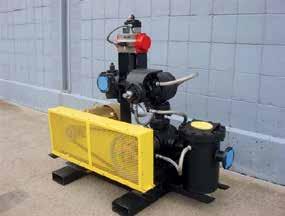

SUSTAINABLE INNOVATION
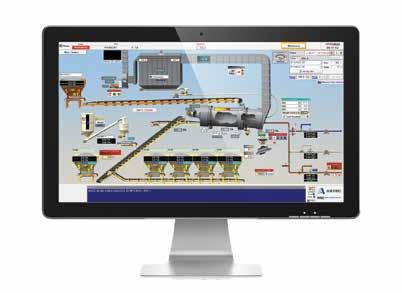

NEW IntelliPac ™ Moisture System
Astec paves the way for sustainable, innovative asphalt plants. The new IntelliPac Moisture System is a revolutionary solution that integrates seamlessly with Astec control systems. This provides unparalleled, real-time visibility into virgin aggregate moisture content. IntelliPac empowers operators to optimize mix design, minimize energy consumption, and reduce environmental impact. With Astec, you get superior asphalt production – better for the environment, better for your business.
BUILT TO CONNECT

TO SEE VIDEO

NAVIGATE TO CLEANER AIR WITH THE
The reverse air baghouse engineered to lead your plant to peak performance.

The Dust Pilot reverse air baghouse is built for high-capacity operations with precision airflow control and fewer moving parts, minimizing maintenance. Its robust, customizable design ensures cleaner air, enhanced plant performance, and compliance with environmental standards. Available in multiple sizes, the Dust Pilot delivers reliable and effective dust control tailored to your plant's needs.

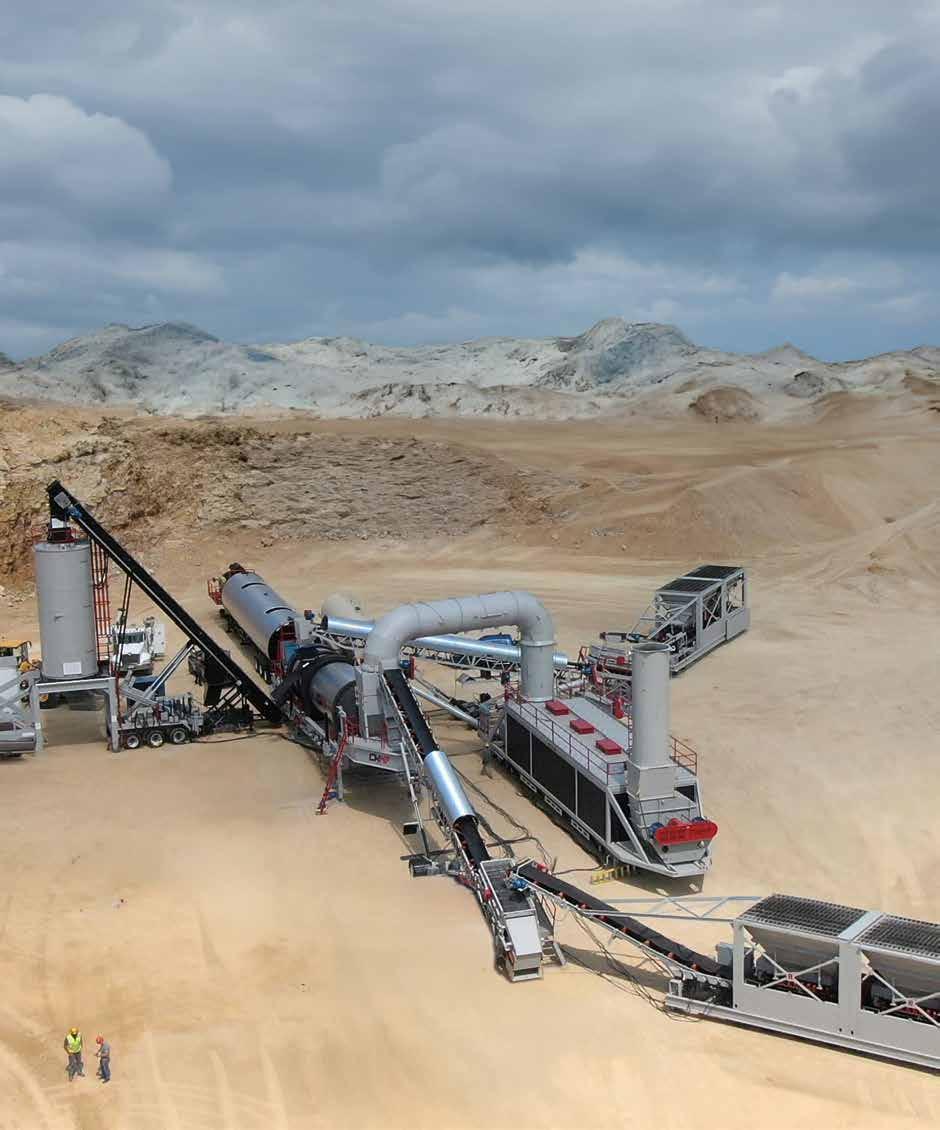
2026 GENCOR TRAINING SCHOOL
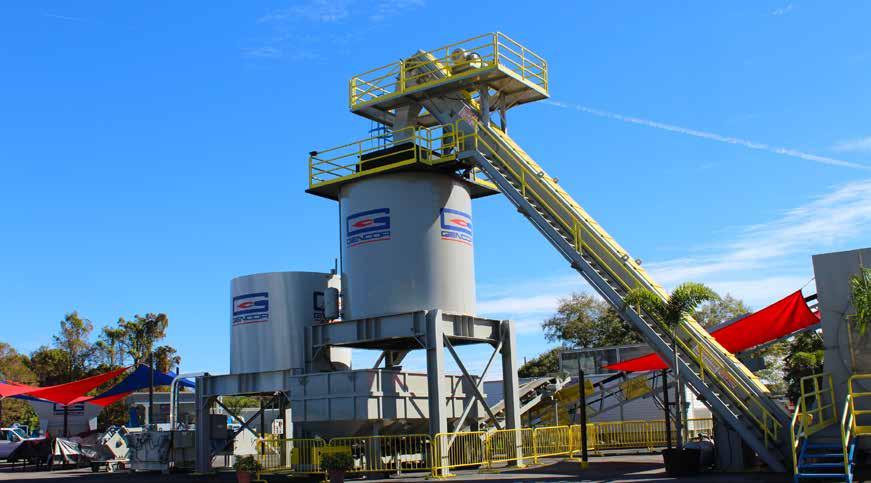

2026 DATES
• Week 1: January 12 - 15
• Week 2: January 19 - 22
• Week 3: January 26 - 29
• Week 4: February 2 - 5
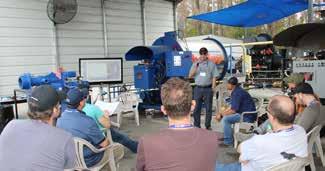
DETAILS
Details can be found at www. gencor.com/training or call us at 407-290-6000 ext. 342.
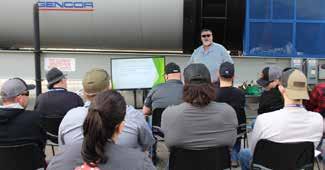
REGISTRATION
CLASS SIZE IS LIMITED!
To secure your seat, please register before December 15, 2025
Improving overall plant production and efficiency are all common concerns for plant owners and operators. Having a well-trained technical crew is vital to maintaining plant performance and efficiency
Gencor and its training staff represent the biggest concentration of knowledge and expertise in all the sciences and technologies involved in the production of asphalt plants. Customers who attend these seminars benefit by having the support and focused attention of the best specialists in the asphalt industry
Using Gencor’s state-of-the-art control simulators and actual equipment, our experts take you step-by-step through a comprehensive & intensive concentrated hands-on training program providing the latest techniques on optimizing production efficiency.
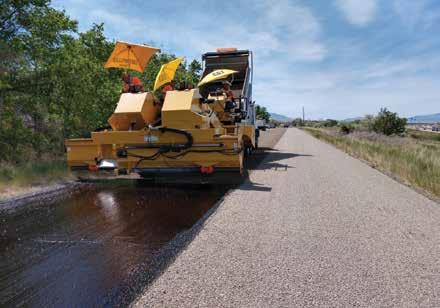
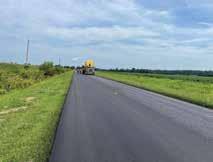
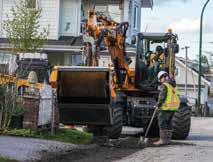





We’ve built our business and reputation through our unparalleled focus on equipment design, durability, and attention to detail. We apply these foundations to our complete range of asphalt plants and asphalt plant equipment. Let us customize to your request - big or small.
Should Asphalt Pay for the Competition’s Growth?
IIn this issue of AsphaltPro Magazine, we present topics and projects that are of interest to the asphalt industry. From hotmix asphalt (HMA) to warm-mix asphalt (WMA) to preservation of pavements to use of green materials in asphalt pavement designs, we explore ways you can improve your bottom line as an asphalt supplier, producer, contractor or related business.
It irks me, as the editor of this magazine, to see legislation presented as beneficial to the asphalt industry when a brief investigation reveals it to be a boon to competing materials for improving their products while potentially lobbing more regulations at asphalt binders and mix designs. I’m talking about Senate Bill S. 1067 and what I see as undermining the road-building funding conversation.
Don’t get me wrong. I fully believe the concrete industry should continue its foray into becoming environmentally friendly. Cutting down emissions from the material used in about 30-50% of all vertical construction (wood framing remains dominant in residential building, according to National Association of Home Builders) can only be good for the planet. It is my opinion that seeking out funding for research is wise on their part, but I hesitate to encourage it coming at our industry’s expense.
The asphalt industry has been paying its way since the Macadam days with research fundraising, industry donations, the kindness of original equipment manufacturer (OEM) funding, and, yes, government grants, and the like. I don’t think we should be expected to accept additional regulations while the concrete industry steps up in 2025 to get funding from taxpayers for emissions reduction. I don’t think departments of transportation (DOTs) should be bribed to use one type of material over another, but should, instead, choose the material that’s going to work best for the conditions, traffic and taxpayers of the area in question.
I’ve oversimplified what I see happening with the Concrete and Asphalt Innovation Act (CAIA), which is a clean-energy bill disguised as a research and development program. It was introduced in March when most of us were prepping for World of Asphalt travel. As of press time, the bill had been referred to the Committee on Energy and Natural Resources, according to congress.gov. In four and a half months, nothing had happened with this bill. So is this a nothingburger we can ignore?
Or is it indicative of the entitlement mentality in society? The asphalt industry is organized and thoughtful in being good stew-
ards of the air, land and water, so others wish to learn from us. That’s wonderful and we should be willing to share knowledge in a collaborative spirit. But should we be excited to devote taxpayer dollars and divert the funding conversation into turning our competition green?
Personally, I would like to shelve the environmental regulations of the funding conversation. Instead, let the concrete industry query its membership for donations to research and development of the tools and technologies necessary to cut emissions. “Concrete” has already worked with the Federal Highways Administration’s Every Day Counts program (see the EPIC2 research as one example), sought out partnerships with university research departments, prepared demo projects with DOTs, and so on.
This is the way “asphalt” did it, too. And I would say we’ve been highly successful.
Since 2001, the Asphalt Pavement Alliance has recognized more than 170 pavements that are over 35 years old with a Perpetual Pavement Award (PPA). The award program was so popular, it had to be augmented with categories. We now recognize these structures as perpetual pavement by performance, by design and by conversion. Asphalt pavements are proven long-lasting and our industry-initiated research and development has been improving their performance for decades.
Let me ask you: Do we need an act of Congress to share monies with the competition to encourage more research on our part? Do we need our funding to depend on a law demanding multi-departmental oversight that’s supported by the likes of CarbonCure, Center for Climate and Energy Solutions (C2ES), Clean Air Task Force, World Resources Institute and others? Because those entities are among the supporters of the CAIA listed at ClearpathAction.org.
It is my opinion that I would rather spend my energy convincing my representatives to fund a roads and bridges bill that helps us build economy-supporting infrastructure and maintain everything that’s in place, rather than hindering progress of the same. I would rather my tax dollars go to fixing highways and byways and connector streets than to research for greening up the competition.
602 W. Morrison, Box 6a Fayette, MO 65248 (660) 728-5007 • www.theasphaltpro.com
GROUP PUBLISHER
Chris Harrison chris@ theasphaltpro.com
EDITOR
Sandy Lender sandy@theasphaltpro.com (239) 272-8613
DIGITAL EDITOR
Sarah Redohl sarah@theasphaltpro.com (573) 355-9775
MEDIA SALES
Cara Owings cara@theasphaltpro.com (660) 537-0778
ART DIRECTOR
Kristin Branscom
BUSINESS MANAGER
Susan Campbell (660) 728-5007
AsphaltPro is published 11 times per year. Writers expressing views in AsphaltPro Magazine or on the AsphaltPro website are professionals with sound, professional advice. Views expressed herein are not necessarily the same as the views of AsphaltPro, thus producers/contractors are still encouraged to use best practices when implementing new advice.
SUBSCRIPTION POLICY: Individual subscriptions are available without charge in the United Sates, Canada and Mexico to qualified individuals.
One year subscription to non-qualifying Individuals: United States $90, Canada and Mexico $125.00. For the international digital edition, visit theasphaltpro.com/subscribe/

Stay Safe, Sandy Lender

2 0 2 6
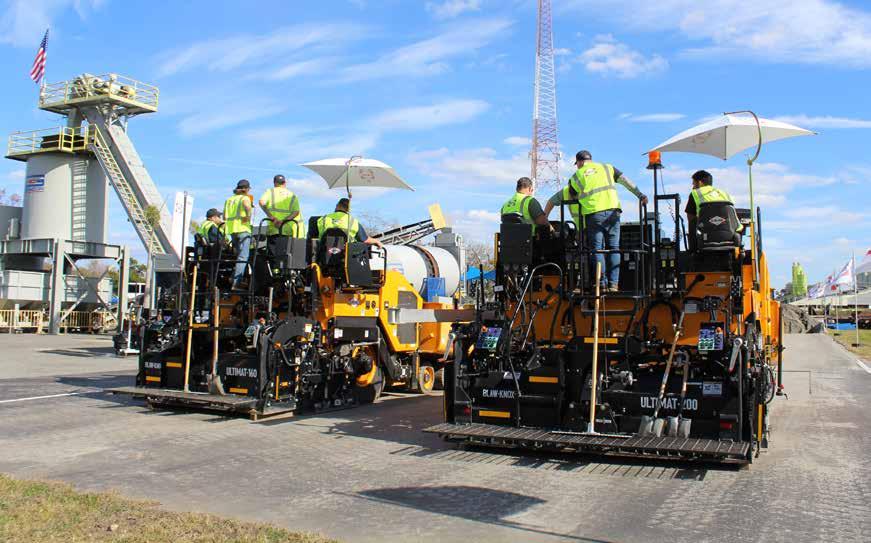
PAVER OPERATION AND MAINTENANCE TRAINING BLAW-KNOX UNIVERSITY
For over a half a decade Blaw-Knox has earned its reputation as the go to source of training and instruction on hot mix paving.
The Blaw-Knox University, is dedicated to training paver operators and foreman on proper Paver Operation and Maintenance and applied Best Paving Practices through classroom-style and handson application courses.
Blaw-Knox provides improved technical and problem-solving skills on a variety of paver operations and maintenance topics. Course instructors share decades of field and teaching experience with attendees, including training on the latest DOT requirements.
DETAILS
• January 12 - January 15
• January 19 - January 22
• January 26 - January 29
• February 2 - February 5 2026 DATES
REGISTRATION
All details can be found at www.blawknox.com/training or contact at (407) 290-6000 ext. 342 or training@blawknox.com
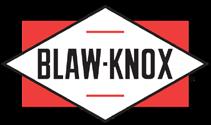
Enhance Work Zone Safety Response
BY KEN HALEY
Smart device communication has reshaped industries across the globe, and road safety is no exception. The rapid detection and timely response to roadside collisions can mean the difference between a quick repair and a tragic secondary crash. Roadside safety devices like crash cushions, guardrails and signs are essential tools for minimizing harm, but their effectiveness depends on knowing when they have been compromised and acting quickly.
This is precisely where advanced impact detection and alert systems are transforming the landscape of roadside safety. In particular, these technologies are revolutionizing safety in highway work zones, where workers are exposed to live traffic and the risk of secondary crashes is highest.
Work zones are dynamic, high-risk environments that demand rapid, informed responses to keep both workers and motorists safe. Immediate notifications to maintenance crews not only save lives but also ensure that damaged safety equipment is replaced or repaired before it puts other motorists or workers at risk. In a time when many transportation departments are juggling limited resources and high traffic volumes, having quick access to the right information in work zones is a game-changer for keeping crews safe and infrastructure in working order. Consistent data flow supports faster decision-making, predictive maintenance, and ultimately, safer roads for both drivers and workers.
CONNECTED WORK ZONES = REAL-TIME SAFETY MANAGEMENT
Modern roadside safety systems address critical safety concerns that frequently arise in temporary and permanent roadway environments. Traditional methods of monitoring roadside safety devices have relied on manual checks and rudimentary alerting systems, posing risks due to delayed responses and inaccuracies in information.
In work zones, where conditions change rapidly and equipment is frequently repositioned, these risks are magnified. Today’s advanced alerting systems provide real-time notifications in case of impacts, allowing road crews and emergency medical services (EMS) to respond swiftly. Rapid response significantly reduces the risks of secondary accidents, where vehicles collide with already impacted devices, thereby protecting additional motorists and roadside workers.
Additionally, these systems can provide information around crash location, helping response teams prepare with the accident site’s specific needs in mind. From traffic control measures, repair parts, and personnel needs, this information enables response teams to be more proactive, rather than reactive once they arrive at the scene. The result is not only a measurable increase in efficiency, but also a meaningful reduction in risk and lives saved.
OVERCOMING CHALLENGES IN ROADSIDE ASSET TRACKING
A major challenge for transportation agencies, particularly departments of transportation (DOTs), is accurately tracking and maintaining the numerous safety devices deployed across roadways. Temporary


Roadside safety devices like crash cushions, guardrails, and signs are essential tools for minimizing harm.
work zones present an even greater logistical complexity due to their dynamic nature, frequent repositioning of safety devices and the number of assets involved.
Advanced tracking tools directly address these challenges by providing precise GPS locations, product identification and impact history data for each safety asset. Federal regulations require DOTs to maintain detailed Roadway Asset Databases, focusing on critical safety features like crash cushions and guardrail end treatments. These databases are essential not only for day-to-day maintenance but also for staying compliant when national safety standards change. When crash testing criteria are updated, agencies must know exactly where outdated devices are located, to prioritize replacements. Real-time data makes that process both faster and more accurate. Additionally, with better tracking capabilities, asset management becomes seamless, fostering compliance with federal
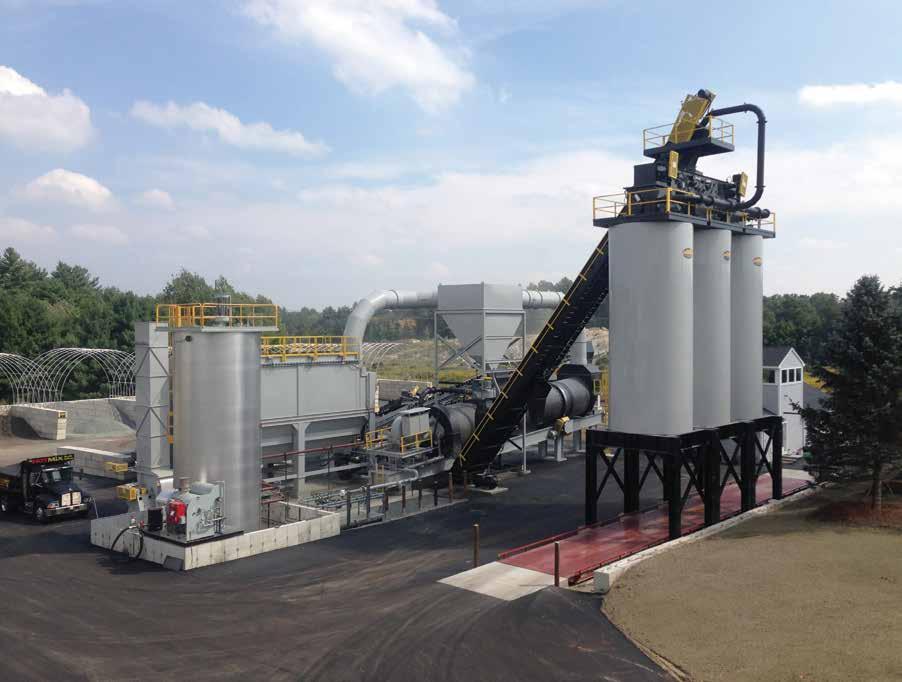
BIGGER PLANTS GREATER SUPPORT

SAFETY SPOTLIGHT

the
standards and greatly improving the efficacy of asset maintenance and replacement cycles.
Perhaps the most powerful feature of modern roadside safety systems is their ability to detect impacts instantly. This capability drastically reduces emergency response times, ensuring that damaged safety equipment is repaired swiftly, which helps maintain consistent and optimal protection for motorists. In work zones, this also means less time that workers are exposed to hazardous conditions while waiting for repairs or replacement of safety devices.
A striking example of the life-saving potential of immediate alert systems comes from a recent case involving the California Department of Transportation (Caltrans). Upon receiving an impact alert, Caltrans crews were able to reach a severe crash scene within minutes, rescuing a family trapped inside a burning vehicle. This rapid intervention underscores the critical value of real-time crash notification systems in roadside safety management.
ASSET MANAGEMENT AND RESOURCE ALLOCATION
The availability of real-time data empowers departments to make informed decisions regarding maintenance and infrastructure upgrades. For work zone crews, this means being able to proactively manage maintenance schedules, anticipate necessary traffic control measures during repairs and reduce their exposure to hazardous working conditions. These proactive insights significantly enhance operational efficiency and safety for maintenance teams.
By having immediate access to comprehensive asset data, transportation agencies can effectively prioritize repairs, replacements and infrastructure upgrades. This data-driven approach facilitates better resource allocation, reduces inspection times and lowers the overall cost of roadway maintenance.
Investing in smart road safety technology presents clear long-term economic advantages. These systems reduce the frequency of manual inspections, streamline repair processes and decrease downtime for safety equipment. By optimizing asset utilization and reducing maintenance costs, transportation departments can reallocate financial resources to other critical infrastructure improvements.
Additionally, data collected from these systems enables more precise safety analyses, supporting evidence-based decisions for road in-
frastructure upgrades. When regulatory changes require hardware updates, transportation agencies can easily identify and prioritize outdated equipment, ensuring continuous compliance with evolving safety standards.
Another long-term benefit lies in the ability to minimize redundant site inspections. If systems can confirm a crash cushion has not been impacted, for instance, a crew can skip that location, conserving labor and vehicle hours. This efficiency compounds over time, generating substantial budgetary and environmental benefits.
ROAD SAFETY REVOLUTION
The real-world impact of real-time alert systems on road safety is already here. From letting crews know exactly where a crash happened and what they will need to fix it, to helping agencies stay ahead of changing safety standards, these systems are turning static safety gear into intelligent tools. It is less about flashy tech and more about better decision-making, faster responses and safer outcomes.
Companies like TrafFix Devices are leading the way. TrafFix Devices demonstrates the benefits of data connectivity in road safety with its Sentinel Impact Tracker. Engineered for use on various roadside safety devices, such as crash cushions, signs and guardrails, the Sentinel is designed to deliver immediate notifications upon impact. It provides critical data including asset GPS location, product specifications, images of road conditions and detailed repair histories.
The Sentinel can be mounted on both temporary and permanent installations, offering flexibility for departments managing diverse types of infrastructure. Its adaptability ensures that safety insights are not limited to fixed locations but can also extend to mobile or seasonal work zones where risks are often higher.
Designed to withstand rigorous environmental conditions and adhere to international highway safety standards, the Sentinel Impact Tracker exemplifies the transformative potential of real-time, actionable data in the road safety space. By enhancing response times, reducing secondary crashes and optimizing asset management, the Sentinel positions TrafFix Devices at the forefront of innovation, ensuring safer roads and protecting lives across the globe.
The evolution of roadside safety is being defined by the ability to detect, analyze and respond to incidents in real time. As transportation networks grow more complex and the demands on agencies intensify, immediate impact detection and connected asset management are no longer optional; they are essential to protecting lives and infrastructure.
In the context of work zones, these tools are critical for reducing worker exposure to hazards, improving crew response times and ensuring that every worker returns home safely. Tools like the Sentinel Impact Tracker from TrafFix Devices transform static safety equipment into dynamic, data-driven assets, empowering agencies to act faster, allocate resources more efficiently and maintain compliance with ever-changing standards. As live-time data tracking continues to evolve, its influence is both practical and profound, giving transportation agencies better visibility, letting field crews work smarter and safer, and ensuring no crash goes unnoticed. In a world where every second counts, the future of road safety belongs to those who leverage real-time intelligence for better efficiency and safer outcomes for all.
Ken Haley is the director of business development for TrafFix Devices
With
help of the TrafFix Devices’ Sentinel Impact Tracker, Caltrans crews were able to reach a severe crash scene within minutes, rescuing a family trapped inside a burning vehicle.

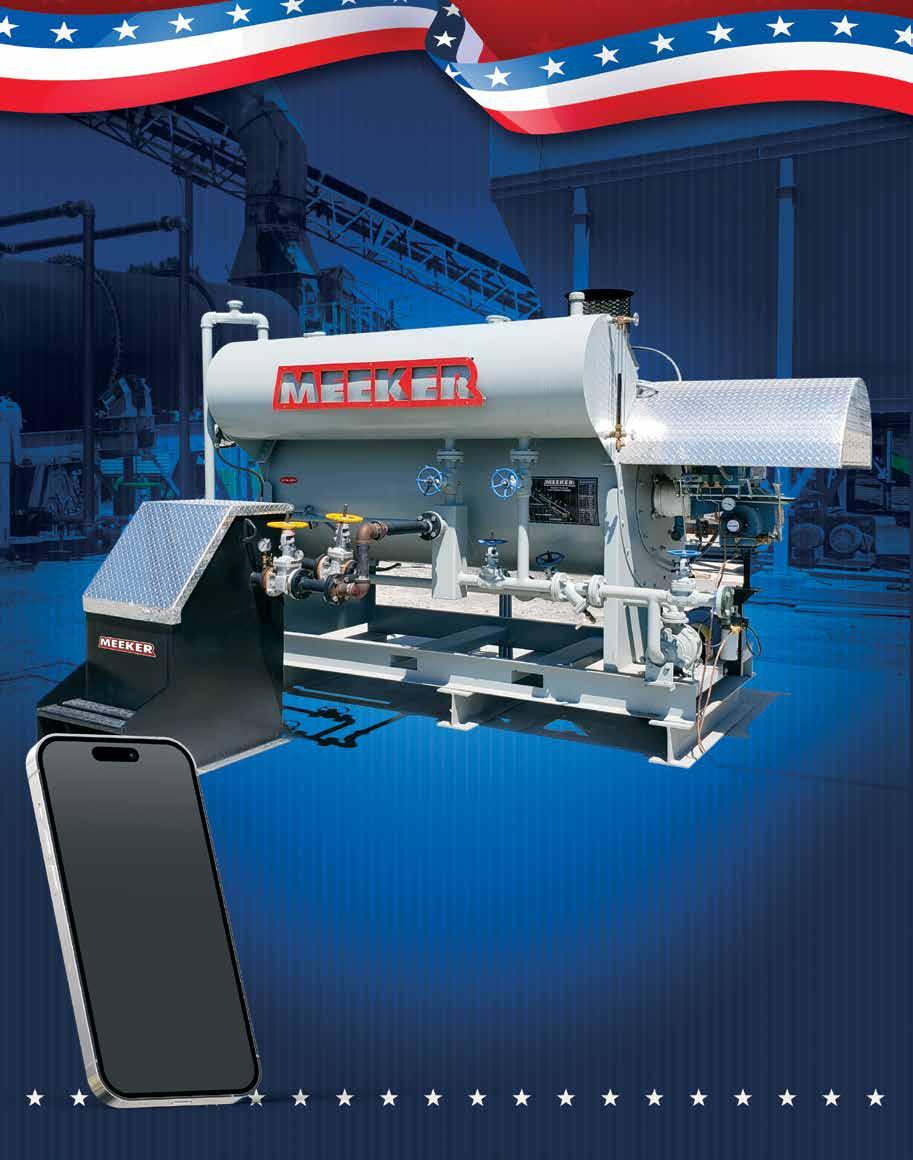


Hard-won know-how for the next generation
Beyond the Spec Book: Bill Stanley’s Standards for Blue-Collar Quality Control
In this no-nonsense guide, the owner of American Pavement Specialists lays out the habits and standards his crew follows to deliver blue-collar quality you can see, not just measure.
BY BILL STANLEY
When people talk about asphalt quality, they usually mean numbers. They’re talking density, profile, smoothness. And that stuff matters. We hit those numbers every day. But there’s another kind of quality that’s just as important. I call it blue-collar quality. It’s what the crew sees. It’s what the customer remembers. It’s the broom lines, the edges, the finish. It’s whether you showed up ready, laid it down right and left the job looking like it should.
At American Pavement, we don’t just hit the numbers. We make sure the whole job reflects the pride we put into it. If you want to build that kind of quality, here’s where it starts.
1. QUALITY STARTS AT CLOCK-IN
Quality control doesn’t start with a test or a spec sheet. It starts the minute your boots hit the ground.
At American Pavement, most of the crew clocks in at 6:15. But I’ve got guys who roll in at 5:45 to start loading trucks, checking tools and making sure we’re not chasing down missing gear when we should be paving. Every shovel, broom, rake and tape measure has a place—and it better be there.
If you show up to the job and realize you forgot something simple, like a transit or the chalk box, you’ve now delayed your start, pulled someone off task to go get it, or worse, you’re stuck without it. And when you don’t have the right tool for the job, quality takes the hit. If you want to lay down a quality mat, it starts with showing up ready with tools in hand, mind on the mission. That’s how you set the tone for the day. That’s how you build quality from the ground up.
2. RUN YOUR RACE, YOUR WAY
At American Pavement, we have a certain way we do things and everybody on the crew knows it. Whether it’s how we prep equipment in the morning or how we leave a site at the end of the day, there’s a standard. And when everyone’s pulling in the same direction, quality becomes the norm, not the exception.
That doesn’t mean our way is the only way. I was helping another contractor recently, jumped in a machine, and started working how I usually do. He politely stopped me and said, “We have a certain way we do things around here.” And I respected that. His crew
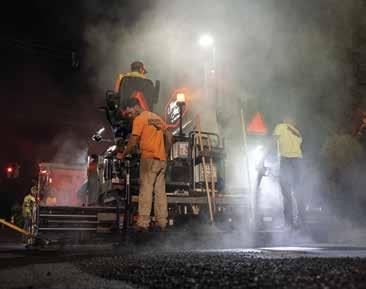
knew their system, they followed it, and they got the job done right. That’s what matters.
You don’t need to copy what the next guy’s doing. You need to know your own process and make sure your team sticks to it. That’s how you keep quality consistent. That’s how you build trust, job after job.
3. DON’T COWBOY THE EQUIPMENT
At American Pavement, we expect full production out of every machine we own. But we also expect our operators to respect that machine. That’s what I mean when I say, “Don’t cowboy the equipment.”
That means no driving too fast, no rough handling, and no running a machine harder than it’s built to be run. When you push a machine past the point of smart operation, you’re not helping the team. You’re risking the job, the schedule and the equipment we rely on to achieve quality.
And it’s not just the big iron. It’s the shovels, rakes, brooms—every tool on that truck matters. If you run over a broom and now we can’t sweep the job, that’s not a small mistake. That’s a direct hit to our finish.
The American Pavement crew lays down a fresh mat during a night job, where preparation, teamwork and attention to detail drive the kind of quality that goes beyond the spec book.
IN THE WORLD.
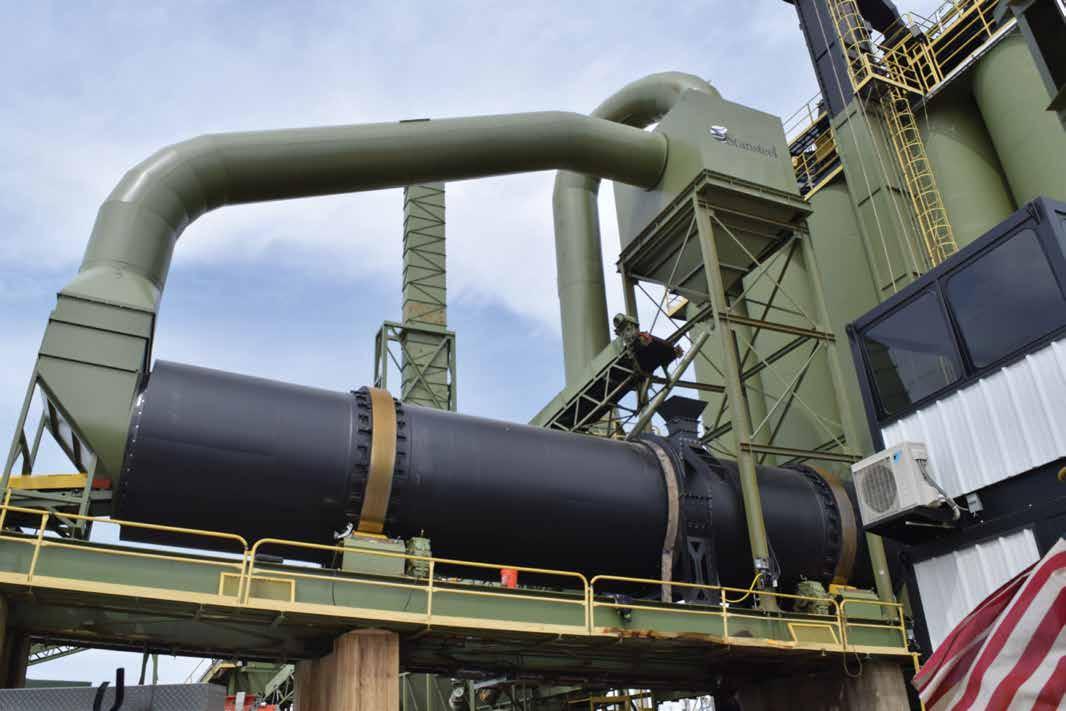
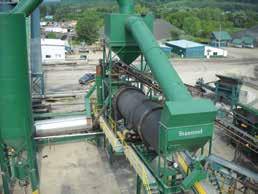
Custom counterflow drum with Rotary Recycle Mixer ®. Multiple RAP and A.C. injection points.
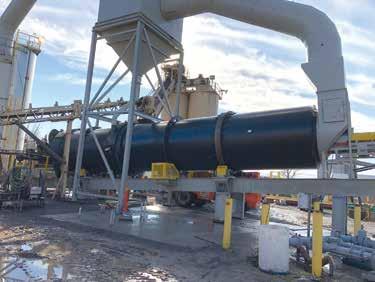
Conversion from old parallel flow drum to 600 ton per hour counterflow running 50% recycle. technology.
Every Hotmix asphalt plant has different operating conditions, therefore, each replacement drum and dryer is custom designed and precision manufactured to meet your specific production demands.
Up to 17 ’ in diameter x 110 ’ long
Replaced failed triple drum with RAP EATER TM - Available in portable or stationary. Customized to retain existing frame, burner and trunnion spacing.
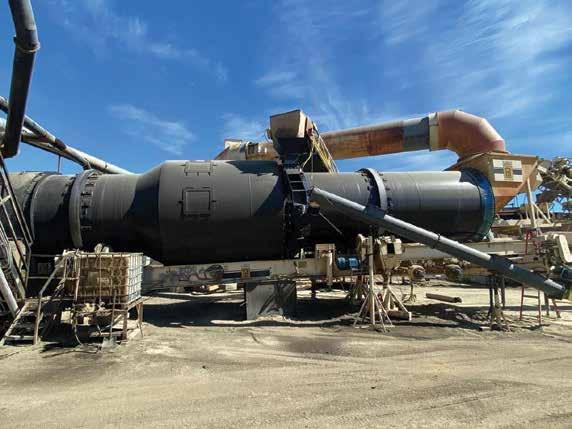
Upgrade every brand built in the last 100 years
Feed and flighting for every material
Asphalt knowledge and experience
Proven quality with over 6,000 rotary dryers built
Replacement and new dryers are Lowest Cost Per Revolution
Dependable per formance for decades
4. THE FOREMAN WALK-THROUGH
Before the first ton hits the ground, our foreman walks the site. We treat that walk-through like it’s part of the work. It’s our chance to make sure nothing’s going to get missed, broken or misunderstood before the machines fire up. That includes checking access, spotting utility covers, planning truck routes and making sure nobody’s tracking asphalt into the porta-john and back across the jobsite.
We’ll also confirm with the customer that we’re on the same page about what quality means for this specific job. For example, some customers want the smoothest finish possible. Others want a little texture for traction. Either way, we get clear on expectations before we lay a single foot of mat.
The walk-through also gives us a chance to flag any other customer concerns—don’t drive on the lawn, don’t block the driveway, don’t scare the dog. Ignore those small details, and you’ve already damaged the customer’s perception of our commitment to quality on the big things.
5. PERCEPTION IS QUALITY
Asphalt is a visual trade. We’re not pouring footings or running conduit underground. We’re the last ones in, and our work is what everyone sees. You can hit every number on the spec sheet— grade, compaction, temperature—but if the site looks sloppy, the customer’s going to think the work is sloppy.
To the untrained eye, a well-swept site with straight joints and crisp transitions looks like a quality job. And to most customers, that is the definition of a quality job. That’s why we pay attention to the finish. Clean lines, swept edges, no stray piles of mix, no tire tracks where they don’t belong. Those details matter, even if they don’t show up on a test result.
I’ve had cars drive over a fresh mat and wreck a lane before we could even get the roller on it. That’s why we plan traffic like we plan everything else—because once that paver starts moving, we don’t want to stop.
6. USE THE RIGHT EQUIPMENT FOR THE JOB
You don’t just grab whatever machine’s available and hope it works. If you want a quality result, you’ve got to match the equipment to the job.
At American Pavement, we run three different pavers, three different mills, and several sizes of rollers and trimmers. We do this because a tight cul-de-sac doesn’t want the same paver you’d run on a big commercial lot. And if you try to muscle a 28-foot paver into a 150-foot section of winding roadway, you’re going to fight that job all day—and your finish is going to show it.
Having the right equipment doesn’t guarantee quality, but it makes quality possible. The wrong setup, no matter how skilled your crew is, will work against you.
STREET SMARTS
7. KNOW YOUR CRAFT
Not every job comes with a stack of specs to meet. In fact, about half the asphalt we lay doesn’t require any density testing at all. That might mean we don’t bring out the density gauge or use PaveScan tech on that particular job. But that doesn’t mean we’re not paying attention.
Asphalt was laid for hundreds of years before we had all this technology. What did folks do before they had all this technology at their fingertips? They relied on their experience! And that’s exactly what we do when the tech’s not on the job. We rely on experience, just like the folks who came before us.
8. REVISIT YOUR WORK
We’re lucky that we’re a local contractor. That means I pass a lot of our jobs just going about my day—weeks later, months later, sometimes years. And I pay attention. I want to see how it held up. I want to know what worked, what didn’t, and what we can do better next time.
That’s how we get better. Sometimes we change our pattern. Sometimes we adjust which direction we pave. Sometimes we flag a mix that didn’t perform the way we hoped. But we don’t learn any of that unless we go back and look.
Quality isn’t just about the job you finished yesterday. It’s also about the job you’re going to do better tomorrow.
9. KNOW WHEN TO SAY NO
At American Pavement, we know what kind of work we’re set up to do well and we try to stay in that lane. When we chase projects that don’t match our equipment, our schedule or our crew’s strengths, quality suffers. Not because the team isn’t trying hard, but because the job throws them curveballs they shouldn’t have to deal with.
You can have a great crew and still end up with a bad result if the project isn’t a fit. That’s why sometimes the smartest thing you can do is say no.
10. QUALITY IS A MOVING TARGET
What passed for a quality job 10 or 20 years ago might not pass today. Standards change. Expectations change. You’ve got to be willing to change with them.
You’ve got to be open to the idea that there might be a better way than how you learned it. That doesn’t mean the old way was wrong. It means we know more now. And if you’re not willing to adapt, you’re going to get left behind.
Quality isn’t a fixed point. It’s something you have to keep chasing.
THE BOTTOM LINE
The spec book tells you what quality looks like on paper. Blue-collar experience tells you what it looks like in the field. You need both. One proves the work. The other gives it pride.
And pride doesn’t come from checking a box. It comes from how you prep, how you pave and how you leave the site when it’s done. That’s what quality means to me.
HIGH-PERFORMANCE, COMPACT MILLING MACHINE
WITH EFFICIENT ASSISTANCE SYSTEMS
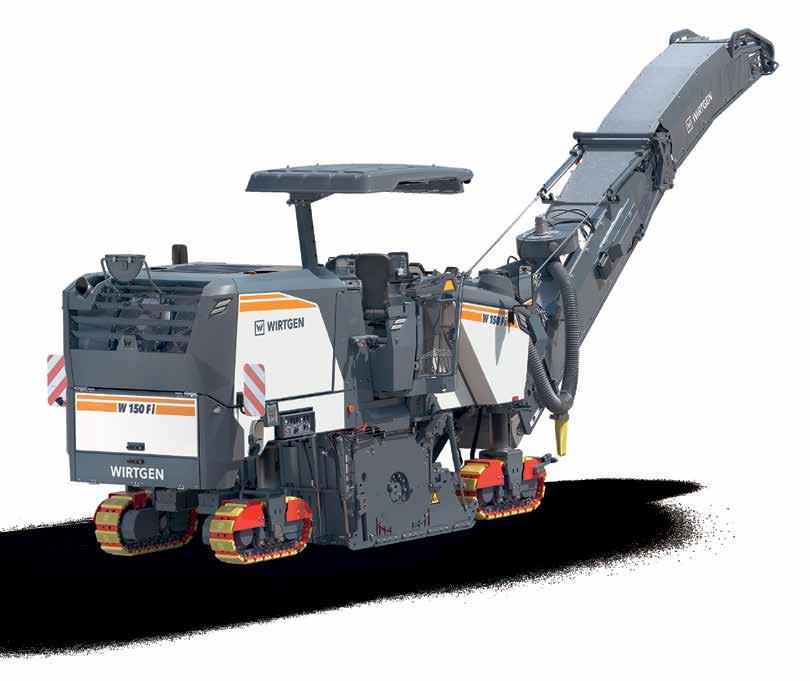
W 150 F (i): The most powerful cold milling machine in the compact class is ideal for use on major construction sites with restricted space. The innovative MILL ASSIST machine control system ensures sustainable and efficient machine operations with high productivity. The state-of-the-art LEVEL PRO ACTIVE leveling system, the intuitive operating concept, and digital assistance systems enable efficient one-person machine operation and precise milling results. The machine’s low weight and mid-mount milling drum assembly ensure that its weight is ideally distributed. Its 9-liter John Deere engine impresses with high torque and low noise emissions under all load conditions.
Start Paving Off Right: Part 2

BY BENJAMIN EVERETT
In the training department in July, we discussed investigating the screed and paver and looked into maximizing the grade and start-off point for your best paving success. This month, we’ll dive into placing the mix.
First, I'm not going through the full suite of every proper start-off step when there is plenty of excellent established material that covers this at TheAsphaltPro.com, within the Asphalt Paving 101 online training course, and in Caterpillar’s “Paving by the Numbers” method. Instead, I’m sharing tips and techniques I’ve learned over the years that may be new and helpful to you.
#1
START WITH TEMPERATURE.
The screed must be at proper temperature to place any hot mix. This means each section of the screed—mains and extenders. The heating elements must all be working properly to allow the screed to float properly and to behave in a controllable manner. A cold screed will always dive immediately after coming off the take-off reference. It will be next to impossible to achieve the target thickness and finished profile if the screed is not up to temperature or has some heating elements not working.
I’ve been on several pavers in the last few years that were in very poor condition, and it’s next to impossible to hold target grade and finished
height when the screed doesn’t heat properly. You can put the tow points way up and end up with the screed planing like a surfboard and still not be able to get target depth until the screed has heated up properly. It can take at least 150 feet or more before the screed starts to plane properly and start floating on the mat as it should. You need to watch it like a hawk, because once it starts heating up, the depth will increase quickly as it comes up to target temperature. Before you know it, you’ll be chasing your tail and having to reduce depth fast.
QUICK TIP: Remember to install auger and mainframe extensions (aka tunnel guards) to within 18 inches of the endgate inside. If you don’t, you will have an inconsistent material feed, an erratic mat texture and a difficult time managing the screed. Basically, remember, “Control the feed; you control the screed.”
#2
GET THE SETTINGS RIGHT.
Check your screed extender match height and slope, main screed crown and extender angle of attack relative to the main. (NOTE: This last adjustment you should have dialed in during step 1 on the flat, workshop floor before it came to the job site.)
Proper Line of Pull: This picture shows the proper line of pull between the tow point and screed pivot point.
Set your screed width and try to always balance the screed by having each extender out the same amount on both sides. I’ve found that some screeds are quite sensitive to being used with one side out more than the other; try to keep it symmetrical if you can. If you must have one side out more than the other for job site conditions, I always prefer to have the lower side out more than the high side. It’s a lot easier for the material to flow downhill to the lower side of the mat than it is to try and push it uphill.
#3
MEASURE AND CALCULATE.
Physically measure the true depth of the start joint. Oftentimes it might be a milled edge from a previously placed mat. Sometimes, the depth may be quite a bit thinner or thicker than it should be, and this requires you to carefully tailor the starting boards to the right thickness to ensure the roll down is right and to avoid having to stop after 15 feet to fix the joint, which we discussed in part one in July. Most repetitive work like asphalt paving is 99% preparation and 1% execution. In other words, the effort you choose to invest each time by following a well thought out, repetitive step-by-step set-up process directly translates into success or failure. This is why airplane pilots must follow a checklist every single time they take off. The act of following a known, established and proven process almost always results in a safe, successful takeoff. If you want to enjoy consistent, repeatable and predictable results every time you take off from the joint, then follow a good process. (If you’re still not sure what that process should be, refer to the AsphaltPro Magazine’s online course, Asphalt Paving 101.)
#4 SQUARE UP.
Once you have the correctly calculated starting boards under each side of the main screed and in the center of the main, be sure to back the paver up square to the joint. You want the machine lined up properly for a straight longitudinal joint to be placed.
QUICK TIP: You also want to place starting boards under the extenders if those are out more than about 20 inches.
Don’t accept or allow the paver to be crooked. Back it up so the foremost part of the screed frame is about 4 inches behind the edge of the take-off joint. Next, I recommend setting the tow points at the approximate correct height for the mat depth you are placing, taking into account the need to keep the line of pull as close to being parallel to grade as you can.
Not every paver will be able to be set to pull in an exactly horizontal plane. I’ve found some screeds are not well balanced. They may be heavy on the front or the rear, or the height of the screed pivot point isn’t on a similar plane to where the pull point is. Oftentimes you have to experiment to find a happy medium that gives a good mat. (See the picture of the Proper Line of Pull for notes.)
Lower the screed onto the take-off boards (or starting reference) and be sure the screed switch is in “float.”

To place a quality longitudinal joint, we must pave a straight, sharp line or replicate a nice, smooth curve or radius. The key to doing this is twofold: 1. Ensure you paint a nice, sharp clear paint line to give the paver operator a good reference. 2. Set out an accurate reference for the paver operator to follow said paint line. The best way is to use an adjustable steering guide or pointer or guide bar that they use to trace accurately the line they need to follow. Make sure these things are in good shape and not bent or broken or difficult to adjust. Recently, manufacturers have released aftermarket devices that mount on the paver and point a colored beam of light along the painted line, centerline or other reference point.
Next, be sure to slowly (at low engine speed) creep the tractor forward about 2 inches to take up the slack at the tow points and to introduce a load on the screed. This is a critical step that, if not done properly, invariably leads to a poor takeoff with a dip or bump.
If you did everything right so far, the leading edge of the screed should now be about 1 inch behind the edge of the start joint.
Next, null out your depth screws (if you have them on your screed) so you are sure both sides of the screed are relaxed or nulled. Then, one side at a time, introduce about 1/8- to ¼-inch slight “nose up” angle of attack with the depth cranks. Remember that earlier you should have already set your extender vertical height relative to the main screed. This will act as a means to help set that approximately 3/16-inch angle of attack, because once you null the screed out, it tends to rest on the extender section. Similar to a plane flying through the air or a boat on water, the screed nose must also be slightly “up” to provide lift.
Now, lower the endgates so the skid plate is lightly contacting the grade on the leading edge. But make sure to have enough “space” with the spring so there isn’t too much down pressure, as that can interfere with the ability of the screed to float properly on the mat.
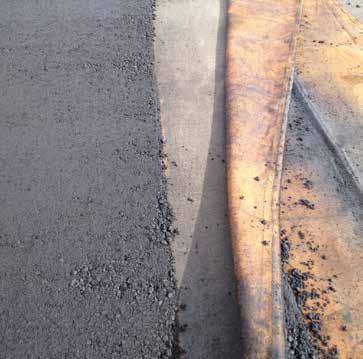
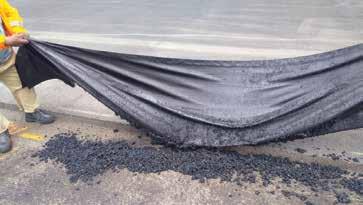
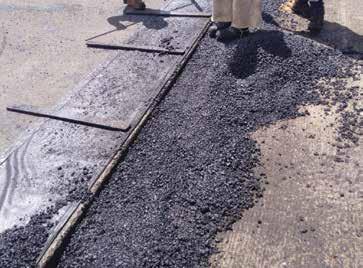
If the other side is matching a previously placed pass, set that side plate at a suitable height to avoid it digging into the mat. (See the “Float the Endgate” sidebar.)
#5
HALF-FILL THE AUGER CHAMBER.
Next, I fill one side of the auger chamber at a time with the engine at low idle and the augers and conveyors at slow speed. Try to fill the area in front of the extender to the level that you would normally have it when paving; about halfway up the auger shaft is a good rule of thumb. It helps to have someone carefully shovel mix out by hand to avoid the temptation to power it out with the augers and overload it.
QUICK TIP
: Don’t overfill this area (it’s easy to do this) as this will affect the screed when you pull off the joint. Also remember safety! Ensure laborers working near the augers are kept safe and their limbs and clothing are well away from moving parts. Shut the augers off once “full.”
Once both sides are full, choose your target paving speed and ensure the trucks being pushed by the paver (or the MTV operator) are informed you are about to start so they are ready and can anticipate how much brake pressure to set and so on to avoid spills. If everyone is on point and working as a cohesive team, many big mistakes can be avoided, and we can have a good day.
Some operators prefer to start in automatic, while others like to stay in manual until they validate that the mat depth is on target. If you know your screed well and how it behaves in all circumstances, and you have performed the set-up steps correctly, start in auto. Typically, I prefer to start manually and switch to automatic after one to two paver lengths; once I’m satisfied I’m on the target mat depth.
To assist me both at startoff and for matching joints or adjacent structures like a concrete channel lip, I use a bobbin and chain. I like to have a visual, tangible reference for fast and accurate feedback as to whether I’m at target depth. Also, although I always advocate for and prefer to use dual grade averaging, there can be some occasions on almost any job where that just isn’t feasible.
On car parks and many siteworks or commercial jobs, it’s typically less about achieving a “billiard table” smooth ride and more about matching adjacent equipment or structures such as concrete channels or light stands and other things of this nature. Frequently, these things we need to match can be at a different elevation or level to the paving thickness we have to meet. Therefore, discretion and a solution are needed. This requires quite a lot of forward thinking and planning to ensure water will still run off the right way and not create a bird bath. If you have the bobbin and chain calibrated to your target loose mat depth, when you need to deviate to carefully match to something on the fly, it’s great to have a trusty reference you know is already right that you can use to quickly get back on grade.
When we have the auger chamber dialed in right, the screed set up per industry best practice and everyone’s ready to go, it’s time to pave.
When we remove the tarp from the start-off joint, we reveal a clean edge. We take loose material left on the tarp to the next lane over and place it where the paver will begin, compacting it in a thin layer while preparing the starting boards for the next lane’s pull.
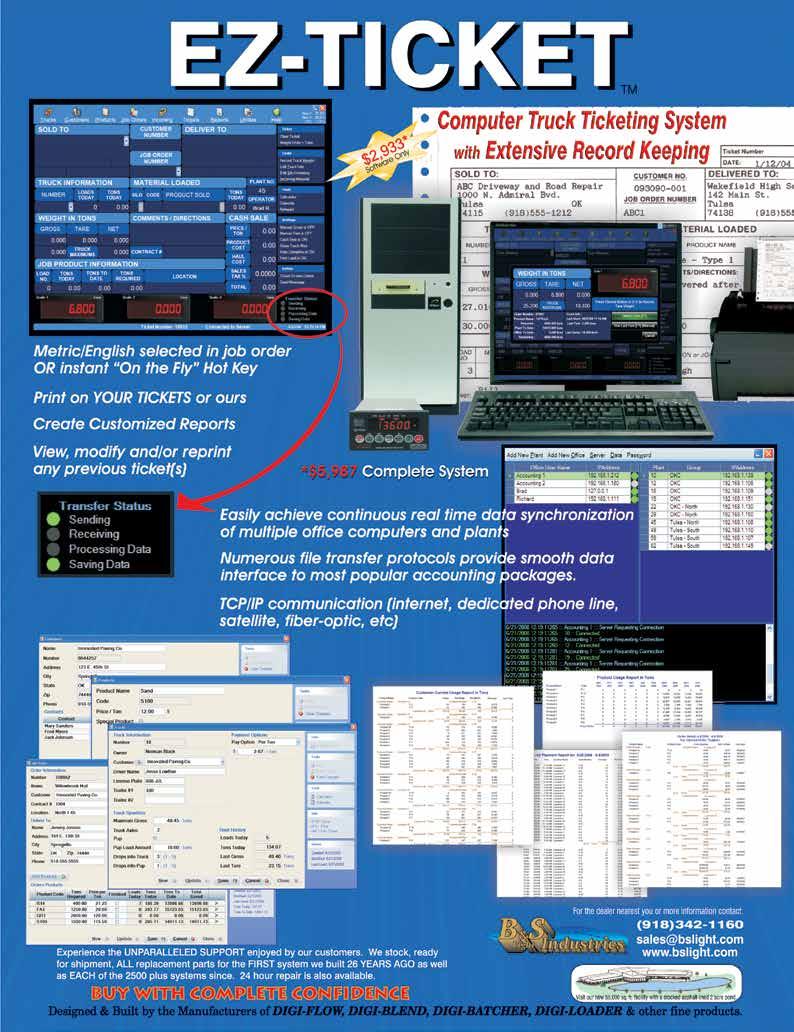
#6
PULL OFF THE START-OFF JOINT.
I pull off the joint at the same speed I’m intending to pave, and I focus solely on hitting target depth, having a consistent, steady 2040 RPM auger speed and a smooth mat without irregular texture. I make sure to trim the extender heights if required to take out any transition lines.
We all know the goal is a consistent mat texture free from segregation and defects. I have a couple of skilled laborers who work as a team and lift up the start-off tarpaulin, fold it in half lengthwise, then carefully place the mix from the tarp on the grade at the next lane over and screed it out fairly thin by hand, then compact it by walking on it. There is usually no need to touch the transverse takeoff joint this way.
If you did things right—if you made sure the screed starting reference was carefully calibrated for the thickness at the joint, set up the screed properly, and took the slack out of the side arms to preload the screed so it behaves in a predictable, controllable way—then the breakdown roller can get onto that joint immediately after the starting tarpaulin and laborers are out of the way. He can start getting
FLOAT THE ENDGATE
This picture shows the endgate lightly floating on the existing surface or grade. Consultant John Ball also describes it as “gliding” on the grade, which is a good analogy. Basically, the side plate or endgates need to lightly (but positively) contact the grade. This is to confine the unsupported edge, and it helps to build a nice, strong, square edge. We need that to build quality joints. If you pave with the endgate raised up, what happens is the longitudinal joint becomes weak, segregated and it rolls over under the compactors. When you confine the edge by putting the endgates down, you build in some density and uniformity because there’s a wall there that defines the edge of the mat. When you match a hot joint, you also want the endgate down, lightly gliding on the previously placed hot mat you are precisely matching.
3 Key points:
• Don’t force the endgates down “hard” on either an existing grade when placing the leading edge (the first pass or the open longitudinal joint) or when doing a hot joint match on a previous pass. Be sure it’s floating nicely.
• Leave some room in the endgate springs so it has a couple of inches of float or travel to move up or down as the grade changes or you have a variable depth. If you have too much down-pressure on the endgate springs, it can interfere with the screed’s job of floating on the mat. That’s why it needs to gently glide.
density. That roller needs to nail that joint in a timely fashion and then keep up with the paver following the pass pattern.
I'm not going to do a narrative on how to compact the transverse properly; others have covered this very well many times over. If you’re still not sure about it, look at the AsphaltPro Magazine online course, Asphalt Paving 101, for some helpful tips from industry veteran John Ball III or Caterpillar’s Todd Mansell with “Joint compaction and roller operations” and “Transverse joints—avoiding the bump!”
These two installments of Start Paving Off Right offer tips and techniques I’ve learned and used over decades in the field. These are some of my “go to” tips to keep the screed from nosediving when coming off the starting reference, thus they are tips for avoiding re-work and achieving success. Let me know which elements you found helpful or which you’re going to try out on your next project. Let’s continue to learn not only from the training courses offered around our industry and in these pages, but from one another as well. I look forward to connecting with you on TheAsphaltPro’s social platforms to share ideas.
Benjamin Everett is the owner of About Asphalt Ltd., and has worked in the asphalt industry for nearly four decades. For more information, contact him at bjeverett@aboutasphalt.co.
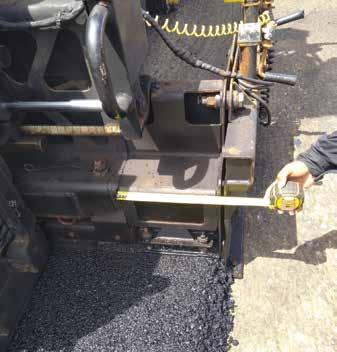
• On a hot joint match, you will soon figure out how much the sweet spot is for your down-pressure. If it’s down too hard it will dig into your uncompacted hot mat and scar it; if it’s not down enough you will get excess material bleeding out, creating a lot of unnecessary hand work to fix that excess up, not to mention likely a nasty line of bones.
LEARN MORE


Delta Brings Larry H. Lemon Award to Missouri
BY SANDY LENDER
Apex Paving Company, a division of Delta Companies Inc., located in Cape Girardeau, Missouri, took the farm-tomarket road concept to heart in the fall of 2024. They performed an exemplary overlay project for the Missouri Department of Transportation (MoDOT) on Route UU amid the fields of Mississippi County while communicating with the farmers in the area to meet everyone’s needs. Here’s how they accomplished this for an award-winning finish.
The project ran from Route 62 to Route D in Mississippi County, through the city of Charleston. Not only did the crew place a 1-inch lift of plant mix surface leveling mix, but they also handled detail work along the way.
Construction Manager Cecilia Cain explained, “This job had a mill/fill section in the city limits of Charleston where a job installing ADA sidewalk had recently been completed. No quick thinking per se, but extra care in not getting mix or tack stains on the new concrete was important.”
The Apex Paving Company crew placed 5,069 tons of plant mix surface leveling course with 34% RAP to increase the smoothness of Route UU, improve safety, enhance the driving experience for the end users and garner a Larry H. Lemon Award. Photos courtesy of Delta Companies Inc.


SERVICE THAT RUNS HOTTER THAN YOUR DRUM
IN THIS BUSINESS, HEAT IS EVERYTHING.
That’s why we bring more than just tools, we bring the fire.
From retrofits and relocations to maintenance, parts, and plant upgrades, Motion Engineering keeps your plant running hot and smooth. With over 30 years in the asphalt industry, we’ve seen it all and solved it all.
Let’s talk about how to make your next project faster, cleaner, and more efficient.

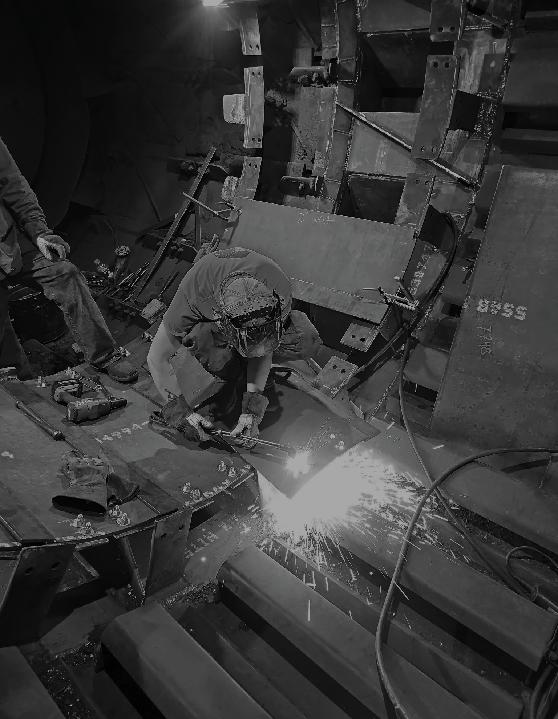






PAVEMENT
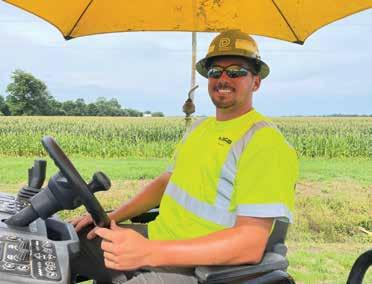
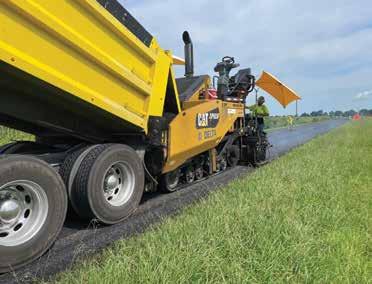
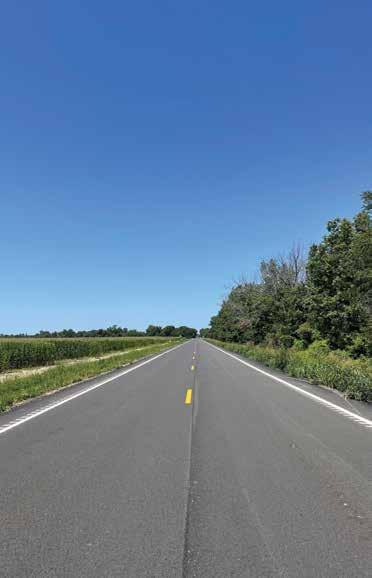
Starting Sept. 3, 2024, the Delta team produced mix with 34% recycled asphalt pavement (RAP) at its Aesco-Madsen plant located about 18 miles from the Route UU project. Plant Operator Daniel Baker averaged 235 tons per hour at 330°F.
Trucks delivered the mix directly to the Cat AP655F hopper—no material transfer vehicle was used. Chris Lombeida, the paver operator, managed the material expertly to the front-mounted screed and placed it for the rolling train. The breakdown roller, a Bomag BW190, was operated by Jason Duckworth.
The team managed the project with a combination of good communication and the latest technology.
“This road was paved in the fall in the heart of row crop country,” Cain explained. “We managed to arrive ahead of time and communicated with the farmers in the area that we would be paving, resulting in a safer and better-quality finished product. This also resulted in farmers being able to communicate with us that they would
like for driveways to be paved further back, resulting in a long-term benefit for the owner of the road with less gravel tracked onto the roadway and improving long-term safety.”
The Delta team also tracked and managed all that movement internally, using Fleetwatcher for electronic ticketing and truck fleet monitoring.
By Sept. 5, 2024, the team had placed 5,069 tons of plant mix surface leveling course to increase the smoothness of the route, improve safety, enhance the driving experience for the end users and garner one of the 10 Larry H. Lemon Awards for the year.
“The standard deviation of the test results along with the appearance of the finished product is how we knew this product was worthy of submitting,” Cain shared. “The ride and aesthetics of this road are enormously improved from what was there before. It takes a team that truly cares about the project to have such a good-looking finished product.”
TOP LEFT: Paver Operator Chris Lombeida paves the mainline for the award-winning Route UU project. BOTTOM LEFT: Screed Operator Kennith Pitts helped bring together an award-winning overlay on Route UU. RIGHT: The finished pavement of Route UU in Mississippi County, Missouri, offers a safer and smoother experience for the end user.
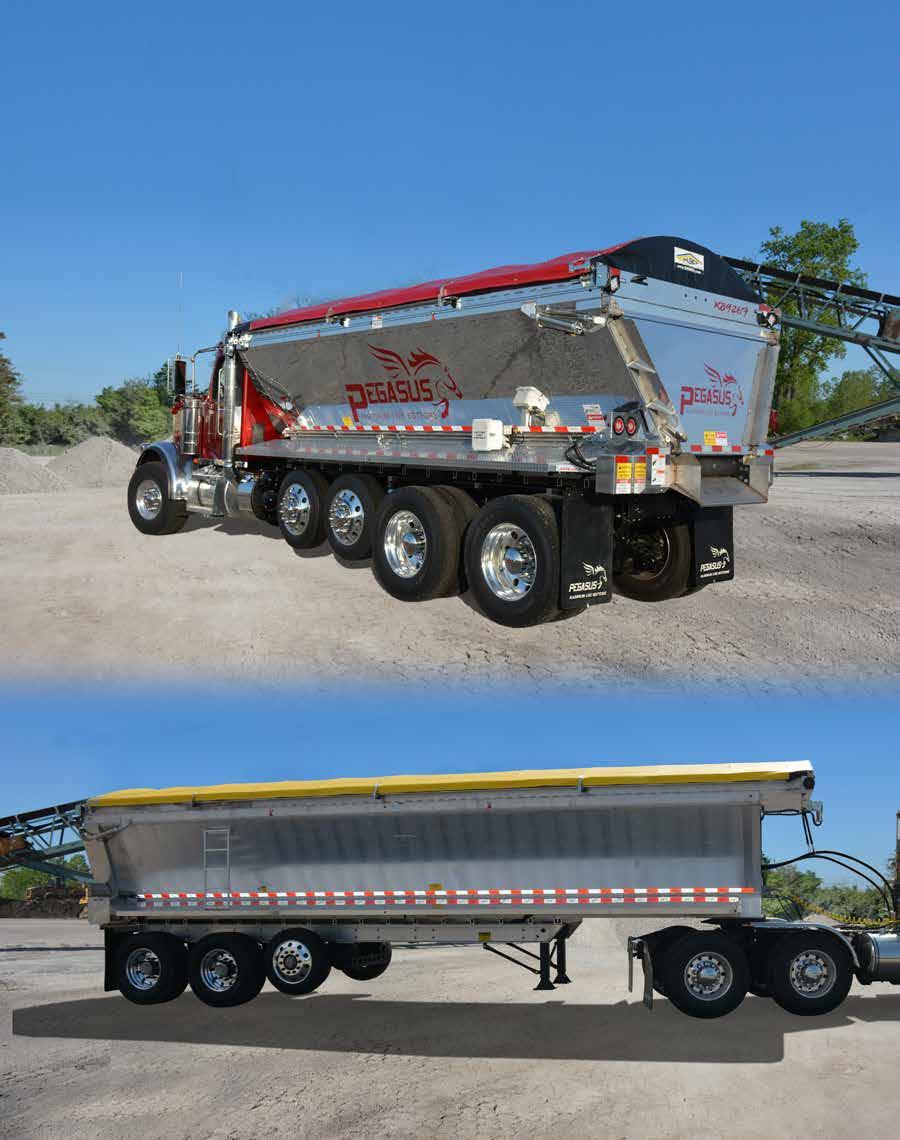


Oklahoma Launches Next WofA Branch
BY SANDY LENDER
Oklahoma can now boast of its commitment to mentoring and encouraging women in the asphalt industry as the state has launched its branch of the Women of Asphalt organization. The new group held its kickoff meeting May 23 during a video chat with the national organization, where they also revealed their Oklahoma WOA logo.
Trish Morris, project manager for Silver Star Construction, Moore, Oklahoma, leads the charge in bringing the branch to life and shared the group had its first official meeting at the Oklahoma Asphalt Pavement Association (OAPA) headquarters office with lunch after the inaugural meeting. At the meeting, Morris asked for volunteers to serve on the initial board; after the meeting the board was finalized, and those members are as follows:
• Morris, chairwoman
• Kati Ratliff of Rudy Construction, vice chair
• Krysta Green of First Water Contracting, secretary
• Chante Kizer of OAPA, treasurer (temporary)
That summary might sound basic on the surface, but the process of bringing a new organization online took months of preparation and has already started reaching out to the next generation of construction workers.
Morris has worked as a project manager and estimator at Silver Star Construction for three years and has been in the asphalt industry for 15 years. Her immediate supervisor at Silver Star is a board member of OAPA advocated for Morris to attend the WofA inaugural executive seminar at Astec Industries in Chattanooga in November 2024. Morris wanted to bring this encouragement and motivation to Oklahoma and saw interest already growing in the state.
“There were close to 30 members in Oklahoma already interested in a Women



of Asphalt branch,” Morris said. “I took that back to Larry [Patrick], who took the information to the board.”
Larry Patrick is the executive director of the OAPA and was pleased to see Morris and Aaron Parker of Silver Star poll the membership to find the level of interest had grown. Patrick shared that the three of them met before the OAPA annual conference to come up with a plan. They would set up a sign-up sheet during the conference for members to show their interest and receive a WofA
hat when doing so. “Silver Star had the hats made, and I can't thank them enough for all of their help,” Patrick shared. “In the meantime, I sat down with the OAPA executive committee telling them of the interest and they liked the idea but wanted to see the number of signups.” Patrick stated that the executive committee may have been taken by surprise by the amount of interest among the membership.
The WofA national organization tracks what state its members are from and shares
After a Zoom meeting with the Women of Asphalt organization, the newly formed Oklahoma branch had its first meeting with lunch to name officers and get down to business.
The newly formed Oklahoma Women of Asphalt branch teamed up with Construct My Future for construction camp during the week of June 2 and worked with 96 "campers” on Paving Day.

those signups with the branches, and that’s where Morris’s roster began. Adding conference signups to the spreadsheet she received from the national organization showed the interest level was high.
From there, Patrick presented the concept to the OAPA board, which he said was very supportive. Morris next reached out to the “signups” to tell them about the kickoff meeting and Patrick reached out to the membership at large to inform them about the branch and how to join.
“Trish has done a fantastic job at reaching out and getting the chapter started,” Patrick shared. “OAPA will be there to help, and I think once we get it announced, we should see financial help coming in. That is one thing I can say, our members are always there to help support OAPA and I don’t see any change for Women of Asphalt Oklahoma. Our meetings will be here at the OAPA office where we have a conference room that holds about 40 people. But we have access to the Oklahoma Home Builders Association right next door to our office that has a conference room that can hold 80 and I hope in the near future we can fill that room.”
With the branch officially formed, the first event took place with Construct My Future, Oklahoma City. “We did construction camp last week with the middle schoolers,” Morris shared. “We had 96 campers on Paving Day. WOA made asphalt candy with them. We had four ladies, myself included, at the event.”
“Overall, the ladies seem excited,” Morris continued. “We are planning to meet in July or August (or both) to plan our next event, and I am working with Larry to fundraise at the OAPA golf tournament in September.”
Next steps include setting up all the social media platforms for the group where board member introductions and information about events will be posted, and volunteering at additional Construct My Future events like construction rodeos to encourage and educate youth on a career in the asphalt industry.
“I am very excited to see the Oklahoma chapter being put together,” Patrick shared. “The time is right and the interest is there.... This is something I have had in the back of my mind and Trish moved the needle to the front of my mind, along with many others. I can’t thank her enough for her hard work to get this off the ground.”
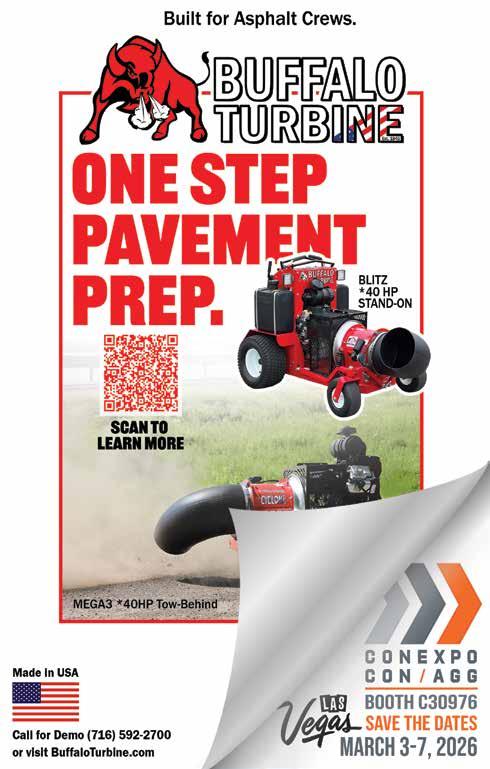
Trish Morris stands with one of the students at the awards lunch for construction camp to take “a pink picture.”
CONTRACTOR’S GUIDE FOR HANDLING PMA
Authors’ Note: This article is based on the Association of Modified Asphalt Producers training workshop. The original presentation was developed by Ron Corun and edited by Bob Kluttz. No AI was used in writing this article.
CCurrently up to 20% of all paving asphalt is polymer modified. The most common polymer-modified asphalt (PMA) binders are in the range of PG64-28 to PG76-28. Key for all modified asphalts is to be safe and follow the manufacturers’ recommendations.
HANDLING AND STORAGE
PMAs are not all created the same way. Mixing modified asphalts from different suppliers can cause the mixture to fail to meet the performance grade (PG) requirements. Some guidelines help reduce contamination at the terminal. Make sure that the tanker trunk is empty before loading, then make sure to load from the correct loading arm. It is important to minimize the heel in both trucks and tanks. As little as 6 inches of residue in a tank can cause up to 10% contamination by a different grade.
At the asphalt mixing plant, use dedicated tanks, if at all possible. If a dedicated tank is not available, empty the tank as much as possible from the previous material and then add two or three loads to fill the tank before testing. Diluting PMA may cause the PG grade to fail.
Vertical tanks are optimum as they provide more efficient agitation. Most PMAs today do not require agitation to prevent separation, the exception being ground tire rubber (GTR). Horizontal tanks work fine for most PMAs but it’s important to circulate to achieve uniform temperatures above and below the heating coils.
For proper circulation it is important that the product should be pumped out of one end of the tank with the return to the other end of the tank. If the circulation is all at one end of the tank the other half of the tank will be a dead zone. It is also important to ensure that the return line goes into the tank below the liquid level. Otherwise, you are spraying liquid asphalt through the remaining air in
BY RON CORUN AND BOB KLUTTZ
the tank and essentially running RTFO on your virgin binder.
As mentioned above, beware of mixing modified asphalts from different suppliers as not all PMAs are created with the same components by the same process and may not be fully compatible. Direct fire heating is not desired. Direct fire heat tubes will have hot spots, which cause two problems. Hotspots will damage the polymer network and lead to loss of PG grade and/or undesired viscosity rise. Hot spots can also lead to coking, which effectively insulates the line requiring ever increasing heat to maintain temperature.
Highly modified asphalt (HP or HiMod) is increasing in use around the United States. Handling and storing HiMod is not much different than handling and storing conventional PMA. The same general guidelines apply, but shelf life of a HiMod may be substantially shorter than a standard PMA. Check with your supplier to get his recommendations.
An ideal tank storage temperature is 320330∞F. A key point for HiMod as well as all PMA is do not overheat it. Overheating can cause the HiMod to further shorten the shelf life. The hotter the temperature, the more rapidly aging can take place in the binder, so it is important to keep the temperature as low as comfortably possible for easy pumping.
Long-term storage of PMA is feasible, but cooling is required. For 60 days or longer, the heat must be turned down or completely off. When bringing back up to temperature, do it slowly. The tank contents must heat up uniformly through conduction and convection until the material is pumpable. Use increments of 20°F over three to four days to get the material back up to circulation temperature.
MIX PRODUCTION
Pay attention to optimum mixing and compaction temperatures for PMA. The classic rule of rotational viscosities at 135 and 165∞C does not apply to PMA. The low shear rotational viscosity of conventional asphalt is similar to the viscosity at high
shear—mixing and compaction. PMAs, however, are shear thinning. The apparent viscosity in a drum is much lower than that from a rotational viscometer. Consequently, rotational viscosity will yield a much higher temperature than is actually recommended. Again, your provider should recommend ideal temperatures for their product.
Ensure that all plant equipment is in good condition and suitable for PMA. PMAs tend to be higher in viscosity so they will draw higher amperage at the pump. The pump should be calibrated and the strainer likely will require larger than standard holes—you want a minimum of 1/8-inch holes.
At startup, circulate unmodified asphalt first. Once everything is hot, switch to PMA and circulate again before starting production. Switch back to unmodified asphalt after the shutdown of the shift to leave unmodified asphalt in the pump and the strainer. The slat conveyor must be properly sized and in good condition. PMA will increase the amperage draw on the conveyor. It’s good practice to start out at reduced tonnage with unmodified mix to get everything up to temperature.
Again, not much is different with HiMod. The ideal mixing temperature is dependent on the mix as always, but 325 to 340°F is generally good. Check with your supplier on recommended warm-mix additives and again start up a little hotter and slower to heat up the whole system, slat conveyor, silos and trucks, to make sure every point in your process is allowed to get up to good operating temperature. On overnight modified asphalt storage there is varying guidance. If you are new at this, or if you have older storage systems, it is probably unwise to store overnight. If you’re well experienced with modified asphalts, if your silos in particular are in excellent condition, well insulated and well maintained, it may be quite feasible to store overnight.
CONSTRUCTION AND MORE THOUGHTS ON HIMOD
When transporting to the paver, make sure as always that the truck bed is smooth and
clean. Use of release agents is recommended, but do not use hydrocarbons. Tarping is a very good thing and probably required in your state. These same practices apply for general PMA and for HiMod. Placing hot-mix asphalt (HMA) generally requires no modifications to equipment. Handwork likely will be more difficult, depending on the mix. The ambient temperature guideline recommended by the Association of Modified Asphalt Producers is 50°F and rising.
Compaction equipment, again, is normal. Keep the mix temperature high enough for good compaction, but no higher. Every 10°F increase doubles the amount of fumes and the higher temperature can damage the PMA polymer structure. Keep the roller up right behind the screed. If available, direct temperature and density measurement is great. Compacting PMAs may actually be easier than unmodified asphalts as it’s been noted that PMA may help reduce or eliminate a tender zone.
There is not much different when placing HiMod. Aim for the temperature behind the screed to be about 300°F. Hotter is not better as it can lead to shoving. Keep the breakdown roller close to the paver. The only significant caveat, and this is an important one, is cooling. HiMod mixes are not any stiffer at operating temperatures than conventional PMA mixes. The cooling rate is about the same. However, the HiMod mix will stiffen up faster than a conventional PMA so your working time on the mix is shorter. This applies to cleanup as well.
Best practices from some states that regularly use HiMod have shown laydown of HiMod binders does not pose a significant problem as reported so far but keep in mind general good construction practices. Prevent end of load segregation. HiMod binders may magnify poor construction practices. Balance your production rate, plant to truck to paver to rollers. Keep the mix moving. Delays will add to cooling of the material, which will give you an increase in viscosity and difficult handling.
Be ready when the trucks arrive on the project as temperature is critical for the mix. Keep compactors tight with the paver. Adjust the rolling pattern as needed to maintain target density. Plant storage may be somewhat different as previously noted. HiMod binders do have a limited shelf life, so scheduling and frequent communication with the binder supplier and the agency is important. Do not store indefinitely. Follow supplier specific handling guidelines, storage temperature, storage time and circulation. Recommended best practices may vary with suppliers, so as with all modified asphalt follow your supplier’s advice.
SOME FINAL COMMENTS:
• Do not overheat. High temperature accelerates viscosity rise. Monitor viscosity daily.
• Warm-mix additives are good.
• Unused high polymer binder can readily be diluted to a PG76-22 or -28.
• Repeat—do not overheat.
A good quality control plan is as important or more so with PMA than it is with conventional unmodified asphalt. Especially if
the plant uses both unmodified and PMA, all of your materials, all your tanks, pumps, valves, sampling points, all need to be well labeled. Establish standard procedures and hardware settings for asphalt flow into the storage and into the HMA plant. In summary, PMA improves the performance of asphalt pavements. Understand the product that you’re using and treat it with respect. Follow supplier’s recommendations and use best practices.
Kenco Engineering, Inc
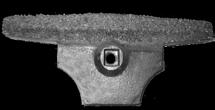
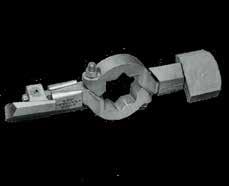

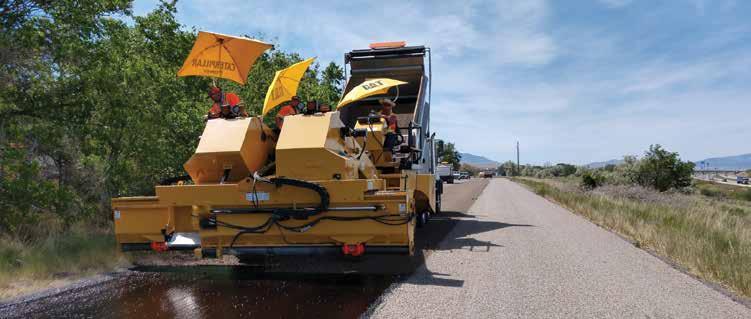
SUPPORT THE ROAD WITH LIGHTWEIGHT AGGREGATE
BY VERNON MORTENSEN
TThe American Society of Civil Engineers (ASCE), in the 2025 Infrastructure Report Card, explained that deteriorated and congested roads still cost the average driver over $1,400 per year in vehicle operating costs and lost time. Poor road conditions also cost counties. Asphalt maintenance experts estimate that every $2 spent on pavement preservation can save $4 to $18 on future costs.
As departments of transportation and municipalities plan maintenance, repair and road improvement projects, it is important to consider paving materials that not only support safer roads, which include preventing damage to constituent vehicles, but also ones that provide longterm resistance to polishing, expected wear and other types of damage.
As demonstrated in projects in North Carolina and Utah, expanded shale, clay and slate lightweight aggregates (ESCS) in asphalt chip seal can be a cost-effective and long-lasting solution to many challenges in asphalt pavement improvement. This material provides a high-friction surface that resists polishing over time to extend the service life of most asphalts by approximately 20 to 40% compared to conventional aggregates, depending on traffic and environmental conditions. It can also reduce damage to constituent vehicles caused by dislodged stones.
HIGH-FRICTION SURFACES THAT RESIST POLISHING CREATE COSTEFFECTIVE SOLUTIONS
ESCS is produced by heating raw material until it softens and air bubbles form. The bubbles remain as unconnected voids when the aggregate cools. These voids create a surface texture with a higher skid number than common natural aggregates (like limestone, dolomites and gravel), approximately 65 for chip seal (compared to limestone’s 50)
and 44 for hot mix (22 for limestone). Further, because the air pockets are found throughout ESCS, the material inherently resists polishing to maintain adequate skid resistance over the pavement’s service life.
In “Pavement Friction for Road Safety,” a primer from the Federal Highway Administration (FHWA), it is noted that high-friction surfaces result in “significant crash reductions in both wet and dry crashes.” Using materials with a high and stable skid resistance, like ESCS, can be a viable option for increased safety along rural and municipal roadways.
For example, the North Carolina Department of Transportation (NCDOT) sought to reduce accidents along Highway 71 near Lumber Bridge. This stretch experienced heavy truck traffic and consistent wet road conditions. To determine if ESCS would be an effective and cost-efficient high friction surface treatment (HFST), NCDOT tested a single layer of ESCS applied at approximately 12 pounds per square yard over CRS-2 emulsion at approximately 0.30 gallons per square yard for 200 yards. The rate of accidents did not increase, demonstrating that ESCS offers an economical HFST alternative to calcined bauxite.
Similar tests to the efficacy of ESCS have been conducted by the Texas Department of Transportation (TXDOT). The results demonstrate this material provides both initial and long-term skid resistance.
IMPROVE MECHANICAL AND CHEMICAL BONDING WITH ESCS
The network of voids provides other benefits in addition to long-term skid resistance. It allows the asphalt sealant to penetrate deep into the aggregate mix.
Crews place aggregate over an asphaltic emulsion. Photo courtesy of the Expanded Shale, Clay and Slate Institute (ESCS)

Committed to Your Success, Every Step of the Way. Let’s build something great together.
Scan Here To Learn More!



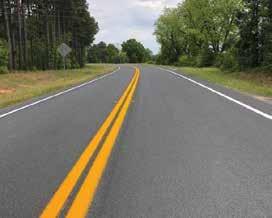
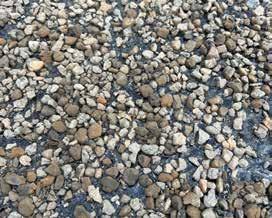
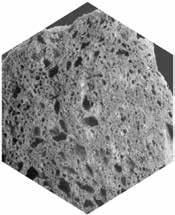
Because this material is produced, its size is highly regulated, and the amount of dust is reduced. On the one hand, the predictable size helps reduce machine clogging. On the other hand, it allows a more even coat. Being nearly dust-free, ESCS improves contact with asphalt emulsion for better retention; it also supports less dust kicked up during projects. Finally, the almost cubical shape of ESCS aggregate enables it to lock into the stone matrix to further improve its long-term performance.
In addition to the physical properties of ESCS that support a better mechanical bond, ESCS has a slight ionic affinity to many asphaltic emulsions. ESCS typically has a net negative surface charge. When used with a cationic emulsion, such as CSS1 or CRS-2, the ionic charges of these materials allow them to bond on the molecular level. This supplements the mechanical bond between ESCS and emulsion for greater retention rates over the course of a road’s service life. The improved bond strength also reduces the instances of flying rocks dislodged by passing vehicles.
REDUCED AGGREGATE DENSITY MINIMIZES DAMAGE TO CONSTITUENT CARS
Aggregates can lose adhesion to asphalt emulsions for a number of reasons: over coverage, being too wet or too dusty, as a result of long-term UV damage or simply being at the end of its service life. Without enough adhesion, tires can dislodge stones and send them flying. When this happens with conventional aggregates, their weight and speed of travel can exert enough force to damage windshields and car bodies.
Because they create a strong bond with asphalt emulsion, ESCS is less prone to being dislodged. If stones are dislodged, they are far less dangerous, due to the low density of the material. Thus, windshield damage claims are practically eliminated, reducing liability and helping to stretch road construction budgets.
The Utah Department of Transportation (UDOT) used ESCS on multiple stretches of interstate, totaling approximately 20 miles in length and using over 10,000 cubic yards of lightweight type C/type II chips. Representatives from UDOT reported zero claims or complaints of broken windshields or vehicle damage, which is unheard of when chip sealing a section of interstate. There were also no areas where chips peeled off the road after a year’s time and a season of snow plowing.
Similar results have been reported from the Louisiana Department of Transportation and Development (DOTD), the Kansas Department of Transportation (KDOT) and in other pavement improvement projects across the country.
LESS WEIGHT CAN TRANSLATE INTO DOING MORE
By reducing the cost of vehicular damage and sidelining expensive HFST material, ESCS can help DOTs do more with less. This alone positions ESCS as a cost-effective option for raising the grade on roads in America.
But it is also important to note that the increased bond strength improves the retention rate of the aggregate to reduce overall costs. In a 2018 report, Carbon County, Utah, found that using ESCS increased the retention rate from 30% to 99%, resulting in a significant reduction of application costs.
Further, since ESCS has a lower density than conventional aggregates, DOTs can expect more yards of coverage per truckload, which can cut fuel and labor costs associated with hauling materials to project sites nearly in half. In addition, because ESCS provides increased durability and skid resistance, it can be specified in smaller aggregate sizes than conventional stone. The Carbon County report indicates that smaller aggregate supports more efficient coverage and shot rates. As the report indicates, the surface area covered with fine chip is often approximately double that of frequently used larger chip sizes. Further, less emulsion is needed to achieve the desired embedment of the aggregate when the particles are smaller.
Both the improved retention rate and a greater per ton coverage rate resulted in over $300,000 in savings annually in Carbon County.
ACING ASCE’S REPORT CARD WITH ESCS
ESCS in asphalt chip seal can be a viable option for improving rural, interstate and municipal roads. With a lower density and the ability to be specified in smaller aggregate sizes, ESCS requires fewer truckloads, less fuel and less emulsion than conventional aggregates. When the total cost of a project is considered, ESCS also represents an economical solution to repairing and replacing pavement across the country. This, in turn, allows DOTs to cover more mileage with their annual budgets.
Between the 2021 Infrastructure Report Card and the 2025 one, road infrastructure did see a slight improvement, moving from a D to a D+. Due to its ability to create longer lasting and more cost-effective asphalt, ESCS can contribute to an even greater improvement between now and the 2029 report card.
Vernon Mortensen is an Aggregate Salesperson at Holcim Lightweight Aggregates–Utelite. He is active in the Expanded Shale, Clay and Slate Institute (ESCSI) Asphalt Committee and has served as the committee chairperson.
LEFT: An asphalt chip seal made with ESCS preserves rural roads. Photo courtesy of Stalite and ESCS. MIDDLE: With higher retention rates and better bonding, ESCS represents a cost-effective road repair solution. Photo courtesy of ESCS. RIGHT: ESCS’s unconnected voids maintain skid resistance over a pavement’s service life. Photo courtesy of Stalite and ESCS
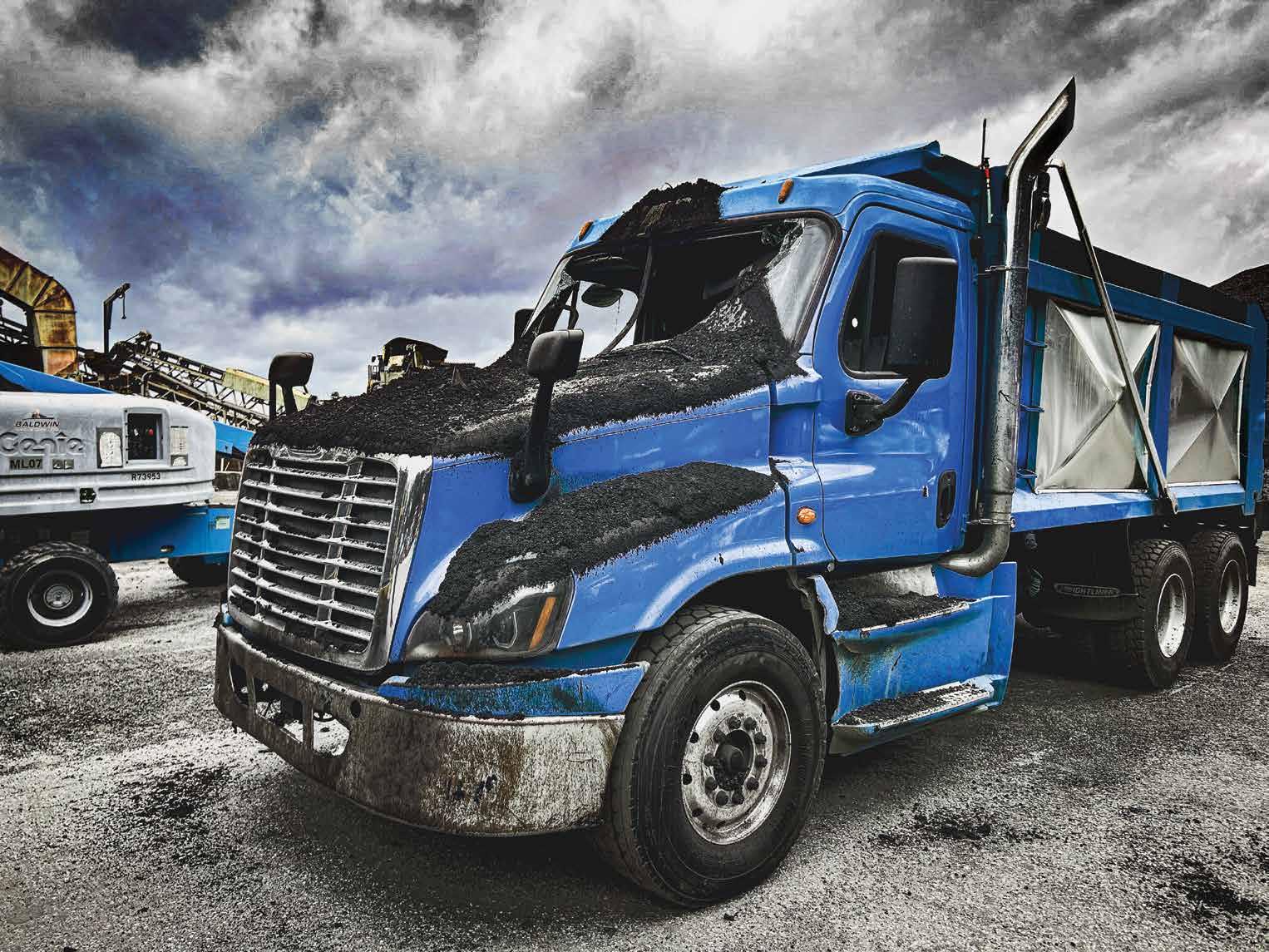


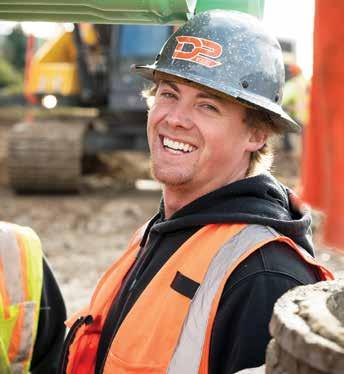
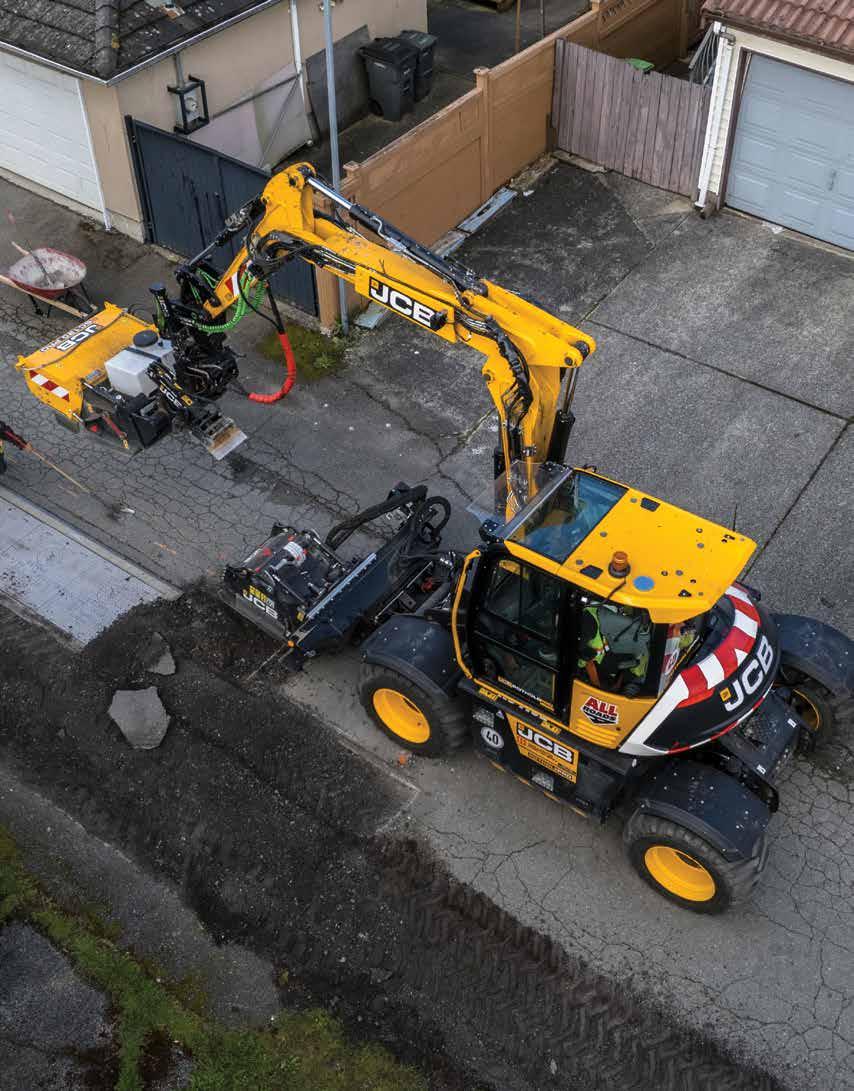
From Backlog to Breakthrough: All Roads' High-Efficiency Approach to Cut Repair
With no prior maintenance division, All Roads took on 1,800 utility-cut repairs in Vancouver—and used an all-in-one machine never before seen in Canada to do it.
By Sarah Redohl
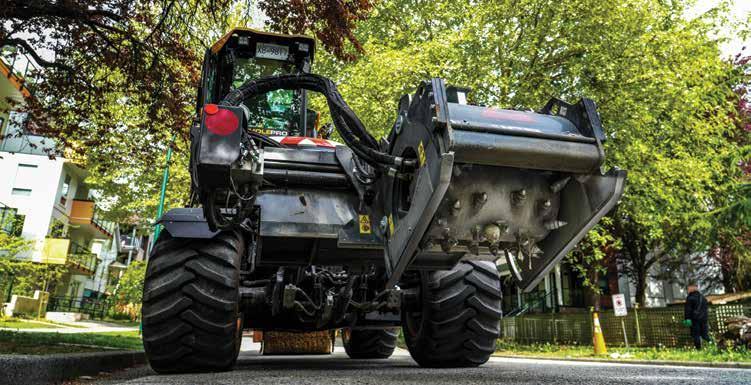
n 2025, All Roads Construction took on one of the most ambitious municipal patching programs in British Columbia: a $5.4 million pilot contract from the City of Vancouver to restore asphalt, curbs and sidewalks at 1,800 utility-cut locations across the city. Though structured as a one-year initiative, the project offers an option to extend annually for up to five years based on performance.
With a backlog that stretched more than a decade and urban working conditions that left little room for staging equipment, the project demanded more than tradition-
al patching methods. It required speed, efficiency and innovation. “This project is really just for one year with an option for four more years,” said Denis Labelle, vice president of operations at All Roads. “So we really wanted to impress the City of Vancouver because we want to make sure those four years come our way.”
The pressure to perform was matched by the scale of opportunity. “The project is set at $5.4 million a year, but the city has $30 million worth of patches to catch up on,” Labelle said. “So it really comes down to what we can accomplish in a year. If we
keep going the way we’ve been, we might get through $7 million worth of patches this year. The more efficient we can be, the more revenue we can generate.”
Although All Roads wasn’t the lowest bidder for the job, they were ultimately selected based on their ability to deliver. “The city trusted that we were capable of marshaling the resources needed for such a massive undertaking,” Labelle said. To deliver on the city’s expectations, All Roads knew they’d need more than manpower—they’d need a new approach.
The JCB Pothole Pro, shown here with its side-mounted planer attachment, was selected for its compact footprint and ability to operate in dense urban environments.
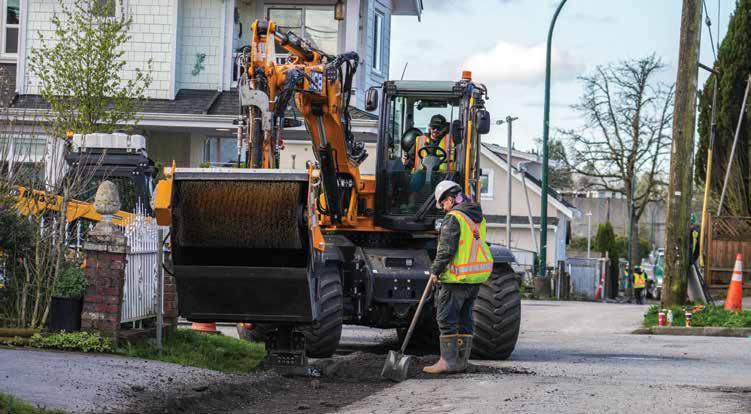
With no prior history in maintenance work, the project gave All Roads a chance to break into the space in a big way. Unbound by conventional patching methods, they had the freedom to rethink the process from the ground up. And they’ve done just that— rewriting the playbook on municipal maintenance and becoming the first contractor in Canada to deploy the JCB Pothole Pro.
Taking On the Backlog
The backlog All Roads was brought in to tackle was staggering. The repairs themselves weren’t complex—but the sheer volume and age of the outstanding work underscored how far behind the city had fallen. “Right now, there are still work orders from 2008, 2010 that haven’t been done,” Labelle noted.
In Vancouver, when developers connect new buildings to water, sewer or gas lines, they typically leave behind temporary patches in sidewalks, curbs and roadways. The City holds back funds to complete the repairs but often ends up doing the work itself. Over time, the backlog grew into the thousands, far beyond what in-house municipal crews could handle.
The conditions in Vancouver—tight alleyways, street parking scarcity and dense

residential traffic—added layers of complexity that went beyond scheduling. The All Roads team realized the traditional equipment model—milling machine, skid steer and excavator—wouldn’t be feasible on a citywide scale.
With so many small sites across a dense urban area, conventional equipment setups weren’t going to cut it. “Once we got
the project, in typical fashion, we started looking at what’s the quickest way to do it,” Labelle said.
That led him to an unexpected discovery. “I kind of stumbled upon the JCB Pothole Pro. I didn’t even know this machine existed.” As he researched further, he realized the machine hadn’t yet been deployed in Canada— and could offer a significant tactical edge.
A two-person crew completes surface preparation on a residential street. All Roads trained its operators on the new equipment prior to the start of the season.
The machine’s integrated broom attachment prepares the surface for patching, helping crews move directly from milling to cleanup without separate equipment.

The JCB Pothole Pro combines a 24-inch side-shifting planer, 4-foot sweeper, 16-inch cropping tool and 180° tilt rotator on a wheeled excavator platform. It also featured a 25-mph travel speed, eliminating the need for lowboy transport between urban patch locations.
All Roads arranged a demo at their asphalt plant, and the results were immediate. “I actually had to tell my guys to quit praising the machine in front of the salesman because you’re making it harder for me to get a deal,” Labelle said.
Labelle said the machine’s versatility makes it invaluable: “Besides patching, there are other things you can use the machine for. It could mill around your manholes on a larger milling job, it can cut your edges straight, it can dig trenches, it can do all kinds of things. It’s really a Swiss army knife of a machine.”
Replacing Three Machines with One
Before adopting the Pothole Pro, the plan would have required multiple machines on every site. “With the pothole patcher, we go from three pieces of equipment (a milling machine, a skid steer and an excavator) to just one piece of equipment that costs a fraction of what those three machines would have cost all together,” Labelle said. And the benefits didn’t stop at cost savings. “Having all three of those machines on each job would take up so much space and require so much more coordination,”
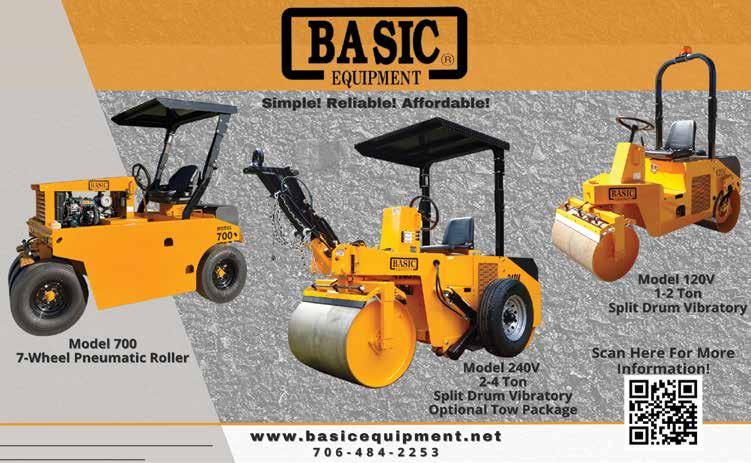
This aerial map shows the distribution of patch sites across East Vancouver, organized into color-coded work zones for scheduling and tracking.
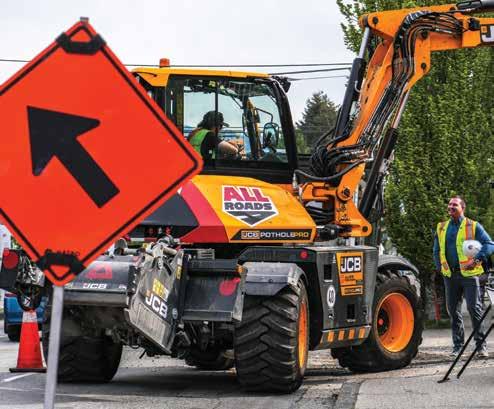
Labelle said. “In downtown Vancouver, there is so little parking that even if we put up no parking signs, people just move them because there’s often nowhere else to park.”
The machine also offers distinct safety benefits on projects in such close quarters. “With less equipment, there’s [fewer] opportunities for people to get caught in the crosshairs of a busy construction site,” he added. “It also makes our job site less complicated and it makes it a whole lot easier for our traffic control people to manage.”
Labelle credits a company culture of openness to change as a big reason for the success. “There are a lot of people in this industry who are still doing things the way they did them in 1995,” he said. “It can be scary to change your processes, but I think that is exactly what makes us successful.”
Rod Stephens, President and CEO of All Roads added, “We are so proud of our entire team for continuing to think outside our traditional industry boxes to provide new and improved levels of service.”
Results in the Field
As the crews began deploying the Pothole Pro across Vancouver, the machine quickly proved

An All Roads Construction crew works using the JCB Pothole Pro as part of the City of Vancouver’s multi-million-dollar utility-cut repair program.
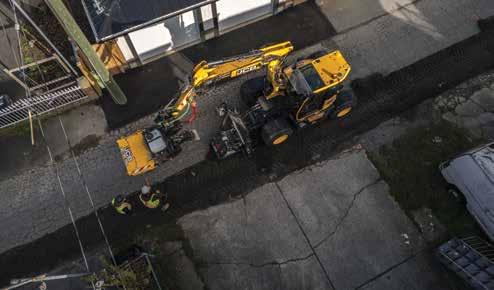
itself. “The City of Vancouver used to do four asphalt patches a day and we’re doing about 14,” Labelle said. Even with a single crew assigned to each work stream—milling, concrete removal, paving—their productivity far outpaced expectations. “We’re looking at having

their list done by August, which they thought would take us the entire season.” [Editor’s Note: As of press time, the All Roads crews were on track to achieve their August goal.]
And it wasn’t just management that came around. “We had a superintendent who re-
ally wanted us to go for the milling machine, instead of or in addition to this,” said Labelle. “Now that he’s seen the machine in action, he says we need two of them.”
Adopting new technology can often come with a learning curve and therefore some resistance from operators, but All Roads found the transition smooth. “To train our operators, the JCB reps came out and gave us a crash course on the machine,” Labelle said. “We have some very good operators who picked it up quickly.”
After several months of consistent deployment, Labelle sees the Pothole Pro as an essential part of All Roads’ fleet. “This machine is a no-brainer for me,” he said. “It saves us time, saves us money, makes the job easier, requires less resources, and it’s safer.”
Labelle sees the Pothole Pro as the most effective patching tool he’s encountered in his decades of experience. “When it comes
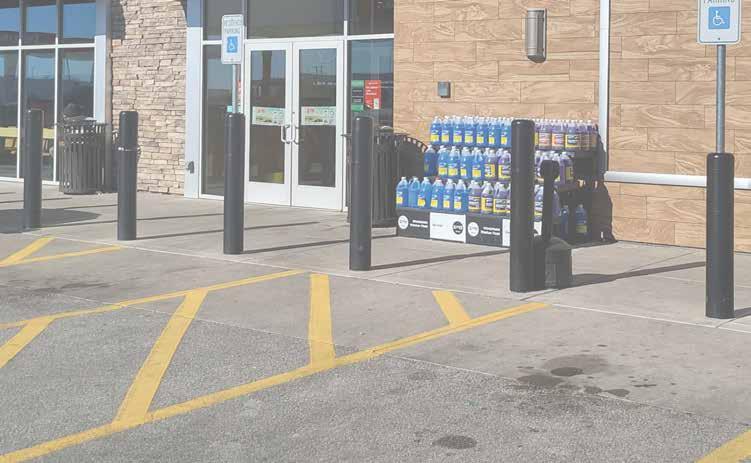




Many patch locations required work in narrow lanes and alleys, where limited space ruled out traditional multi-machine setups.

to patching, there’s no better way than to use this machine that I’ve seen in my 30 years in this industry. If you don’t believe the hype, ask your dealer for a demo.”
A Scalable Model for Urban Maintenance?
While the scope of Vancouver’s pilot is specific to its needs and constraints, the approach All Roads has taken—pairing private-sector capacity with compact, versatile equipment—offers a potential reference point for other municipalities facing similar backlogs.
The project’s early progress highlights what can be achieved when contractors are given room to rethink the workflow. For All Roads, that meant identifying tools that fit the realities of urban sites and training crews to adapt quickly.
As Labelle put it, “There are a lot of municipalities across North America that are struggling to keep up with their patching. I think what the City of Vancouver is doing, what we’re helping them do, is a good model other municipalities could use to catch up on that work.”
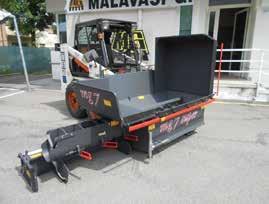

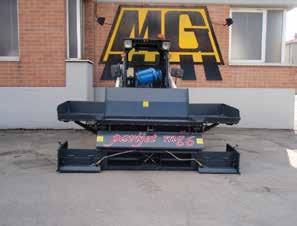
The milling head carves out deteriorated asphalt at one of the 1,800 sites included in Vancouver’s backlog of deferred repairs.
Restoring In-Place Binder in Wyoming
Town of Jackson proves soy-based preservative lifts binder over 5%
By Jeff Davis

The overall project in Jackson, Wyoming, averaged a +5.9% binder increase across the five streets of 18,800 square yards Bargen treated with BioSpan’s RePlay® in August 2024. Viscosity testing showed lower stiffness, setting the pavement up for renewed flexibility ahead of winter’s freezing conditions.
At 6,200 feet at the gateway to the Yellowstone and Grand Teton National Parks, the pavements in the Town of Jackson face the pendulum of 90-degree summers and intense UV, to subzero winters and freeze-thaw conditions.
“Traditional fog seals give us a couple of years of color, but not real structural help,” explained Senior Engineer Scott Mohror, P.E. “We needed a treatment that actually puts binder back into the asphalt pavement, not just on top.”
The town turned to BioSpan Technologies’ RePlay® Agricultural-Oil Seal & Preservation Agent.
“RePlay soaks in deeper to replenish lost oils, bond with aging binder, and lift binder content,” explained Lindsey Hermes, president and COO of BioSpan Technologies. “That rebuilt flexibility keeps roads in service years longer.”
RePlay checked three boxes for the town:
• Deep penetration. Lab work later confirmed movement to 1¼ inches.
• Faster cure time, which is essential during summer tourist season.
• Carbon-negative profile that advances Jackson’s Net-Zero 2030 plan.
And they discovered an added bonus. According to Mohror, “It smells like aromatherapy—citronella and orange instead of hot with [asphalt].” This novelty even drew a curious black bear to one freshly treated block.
How Crews Applied RePlay
During an August 2024 window of clear weather, applicator Bargen Inc., Mountain Lake, Minnesota, treated five residential streets— Lodgepole Lane, Rancher Street, Flat Creek Drive, Bar-Y Road and Simpson Avenue.
The equipment Bargen used alternated between a flatbed carrying a 16-foot adjustable spray boom and a Toro compact utility vehicle (CUV) with an 11-foot boom. Both BioSpan spray systems are computer-controlled; the pump output is automatically calibrated to truck speed, with GPS used as a backup to prevent over- or under-application.
For the application rate, Bargen averaged 0.020 gallons per square yard (≈ 96.8 gallons per acre), which is Bargen’s standard “2-0” rate for pavements that already contain relatively high virgin-oil content. The crew used a hand sprayer to test strips at curb, crown and turn radii, which sometimes told them to adjust the rate or allow extra cure time on dense, high-traffic edges.

To prepare the surface, crews took care to sweep the pavement so that nothing stood in the way of RePlay achieving maximum penetration. Because it is a clear product, there were no staining worries. RePlay cures transparent, so Bargen didn’t have to worry about cleaning up a mess afterwards where the spray met the concrete curb; overspray isn’t visually objectionable once it dries.
Core-Sample Results Confirm Rejuvenation
• Lodgepole Lane (PCI 77, 25+ years old): RePlay increased binder content by 5.47% ¼ inch from the surface and 5.69% at 1 ¼ inches depth, showing a positive effect on aging asphalt.
• Flat Creek Drive (PCI 58, 15+ years old): Binder content increased 4.75% at ¼ inch and 5.31% at 1 ¼ inches.
• Rancher Street (2-3 years old): Binder content grew 6.13% at ¼ inch and 6.19% at 1 inch, demonstrating the efficiency of RePlay on newer streets as well.
The overall project average was a +5.9% binder increase across the five streets. Viscosity testing showed lower stiffness, indicating renewed flexibility before winter freeze.
We learned from this to validate with cores. Deep-core binder testing created hard data that won Public Works approval for expansion.
We also learned that surface preparation is an important best practice. A backpack-blower and spot sweeping helped ensure maximum penetration.
It’s also best practice to dial back nozzle pressure near curbs, houses and parked vehicles. Bargen’s crew normally sprays at about 38 psi but lessens the intensity along sensitive edges to prevent misting and overspray.
“RePlay didn’t just seal the surface—it restored binder through the top inch of pavement. That’s the metric that moves a preservation program from ‘nice idea’ to a budget line,” Mohror said.

Looking Ahead
Earlier in 2025, armed with core data and positive neighborhood feedback, the Town of Jackson brought Bargen back to apply RePlay to another 30,600 square yards of pavement.
With measurable binder gains, faster reopening and a net-negative carbon footprint, Jackson’s pilot positions soy-based RePlay as an essential tool for high-altitude municipalities striving for both fiscal prudence and environmental stewardship.
Jeff Davis is the communications manager for BioSpan Technologies, specializing in bio-based pavement solutions, infrastructure and sustainability.
Bargen’s crew normally sprays at about 38 psi but lessens the intensity along sensitive edges to prevent misting and overspray.
Bargen Inc. sprayed the RePlay Agricultural-Oil Seal at a rate of 0.020 gallons per square yard. The product is transparent, offering a stainless application that allows pavement markings to remain visible.
PPleasants Construction Uses Sustainable Asphalt Innovation on Maryland’s MD 650
By Doug Carlson
leasants Construction Inc., Clarksburg, Maryland, has taken asphalt paving to new heights with a pioneering balanced mix design (BMD) project featuring rubber-modified asphalt (RMA). This ambitious undertaking on a 10-mile stretch of MD 650 (New Hampshire Avenue) in Montgomery County showcases how innovative materials and forward-thinking collaboration can redefine pavement performance and sustainability.
Pleasants Construction, a family-owned leader in site development since 1964, has built a reputation for delivering turnkey site development solutions across the Washington Metropolitan area. With over 350 employees and a fleet of more than 300 vehicles, the company excels in earthwork, asphalt production, paving and more. Its commitment to quality and innovation is evident in its latest project, which leverages BMD and recycled tire rubber to enhance pavement durability.
Leading the charge is Craig Michael, Pleasants’ quality control (QC) manager. With over a decade of experience and certifications like MARTCP Level 2 and NCAT Advanced Mix Design, Michael’s expertise in asphalt testing and mix design has been instrumental to the company’s growth. Michael brings both technical prowess and a passion for pushing boundaries.
A Legacy of QC
Michael comes from a family with deep roots in asphalt testing and innovation. His grandfather, Larry Michael, was an early adopter of polymer-modified asphalt and stone matrix asphalt in Maryland. His father, Rick Michael, ran QC labs and then became the production manager and superintendent of the asphalt division, until he retired last year.
The MD 650 Project Under MDOT SHA’s Leadership
The MD 650 project, which began with milling on April 13, 2025, and overlay paving later that month, transformed a conventional Superpave overlay into a full-scale BMD pilot using RMA. Originally planned as a standard dense-graded mix, the project pivoted to incorporate rubber across the entire corridor, a bold decision driven by sustainability goals and performance potential.
This project is the first in Maryland to fully integrate BMD with a next-generation dry process for RMA. Unlike traditional methods, the dry process uses finely ground rubber powder dosed at 10% by weight of the binder. The rubber is added via a modified cellulose fi-
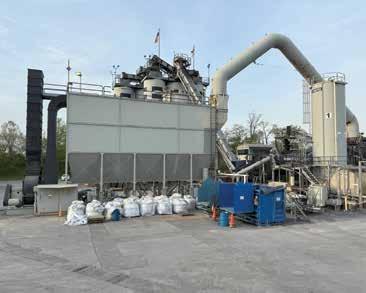
ber blower through the reclaimed asphalt pavement (RAP) chute, or in the case of Pleasants’ plant, a port with a cam-lock fitting was installed by their plant personnel to provide a clean and secure location to handle powders and fibers.
Two rubber additives, SmartMIX from Liberty Tire and Elastiko from Asphalt Plus, were evaluated, paving the way for future Maryland State Highway Administration (SHA) specifications.
The mix design is equally innovative, featuring 35% high-quality RAP, a PG58-28 binder and 5.4% total asphalt content (3.7% virgin). A liquid antistrip additive enhances durability, while the rubber boosts cracking resistance, as evidenced by a significant jump in the indirect tensile asphalt cracking test (IDEAL-CT) cracking tolerance (CT) index from 93 to 226 with rubber inclusion. The Indirect Tensile Strength (IDT) remained stable at 222, confirming the mix’s balanced performance.
The project’s success owes much to MDOT SHA’s forward-thinking engineers. Asphalt Technology Division Chief Chandra Akisetty brought insights from his doctoral research at Clemson University, where he studied recycled tire rubber in asphalt. Drawing on dry process successes in states like Georgia and Virginia, Akisetty crafted a special provision for Maryland’s pilot. Asphalt Field Engineer Larry Riggleman leveraged his industry experience to champion BMD and rubber integration, while Area Engineer with Con-
Supersacks of SmartMIX preswelled rubber are lined up for use in the Maryland 650 project. All photos courtesy of Liberty Tire

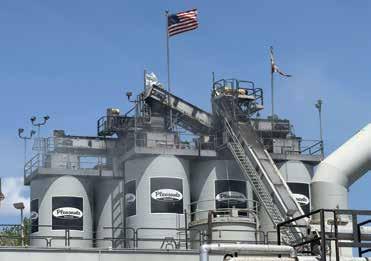
struction Mike Little saw the project as a low-risk opportunity to innovate, building on his decades of asphalt construction expertise. This collaboration reflects MDOT SHA’s renewed commitment to innovation. “The SHA was a leader in asphalt innovation years ago, and we’re excited to reclaim that position,” Riggleman said. The project also aligns with Maryland’s sustainability goals, spurred by legislative discussions about using local tire rubber in asphalt, even though a mandate didn’t pass.
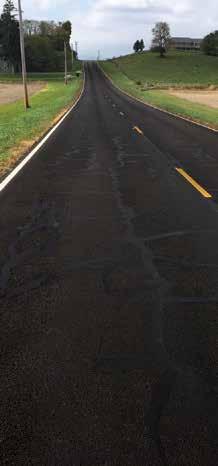

Overcoming Challenges with Innovation
Implementing rubber-modified BMD wasn’t without hurdles. At Pleasants’ asphalt plant, the team fine-tuned the rubber dosing process, running at 285 tons per hour and pushing 57 pounds of rubber per minute. QC testing, conducted every 3,000 tons, revealed nuances in lab procedures.
For instance, oven burn-off tests required a 1.1% correction factor due to carbon black in the rubber, which behaves like fine aggregate.
SUPERIOR PAVEMENT PRESERVATION




LEFT: The SmartMIX rubber is pre-swollen with extender oil to solve swelling issues during compaction. RIGHT: The team at Pleasants
Construction fine-tuned the rubber dosing process, running at 285 tons per hour and pushing 57 pounds of rubber per minute.
QuikJoint

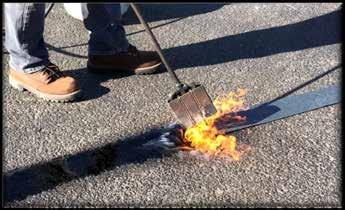


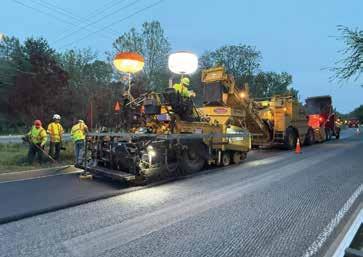
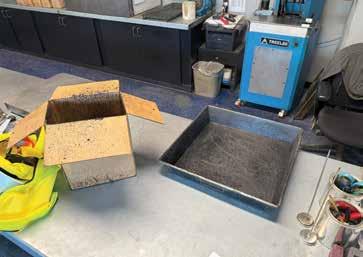

Compaction posed another challenge, as rubber mixes expanded post-extraction unless cooled under compression. However, the SmartMIX rubber is pre-swollen with extender oil to solve the swelling issues during compaction.
The team also discovered that prolonged oven heating during BMD specimen preparation skewed CT Index results, with later samples dropping significantly. This led to a best management practice of preparing only three samples at a time to minimize oven exposure.
“We don’t want to just meet BMD criteria—we aim to exceed them,” Michael said, emphasizing Pleasants’ commitment to quality.
Michael shared some best management practices learned through this experience. “With the high frequency of testing and volume of mix manufacturing both the contractor’s and the agency’s specimens, we noticed a drop off in the CT Index results based upon how the mix was reheated in the oven. The longer the mix was held in the oven awaiting sample preparation, the lower the CT Index results. Also, having loose mix on a tray ages the mix more than the mix kept in the carboard sample box, affecting the CT Index results.
“At first, we thought we had a big difference between our lab and the state lab, but it turned out to be the sample aging during
TOP: Pleasants Construction placed a balanced mix design featuring rubber-modified asphalt on a 10-mile stretch of MD 650 (New Hampshire Avenue) in Montgomery County for the State Highway Administration in 2025. BOTTOM: The team proved having loose mix on a tray ages the mix more than the mix kept in the carboard sample box, affecting the CT Index results.
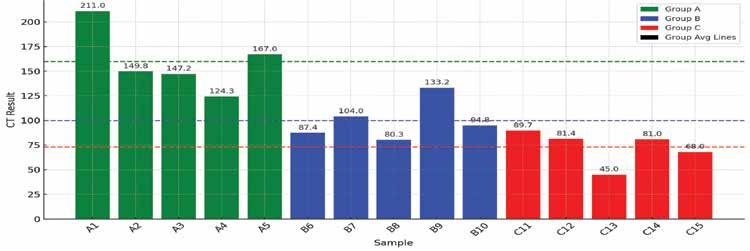
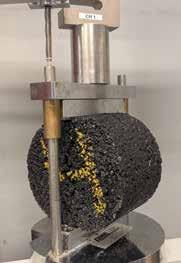
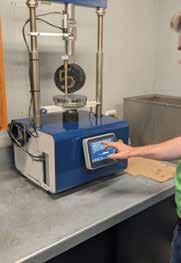
The team thought they had a big difference between the contractor and state lab, but the discrepancy in IDEAL-CT numbers turned out to be the sample aging during preparation.
QC Manager Craig Michael shared, “It’s best to keep sample lots small, not make so many all at once.”
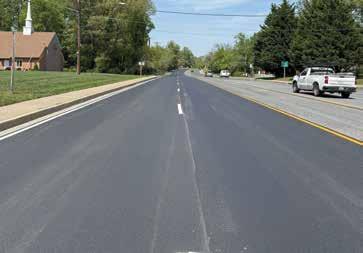
preparation,” Michael continued. “It’s best to keep sample lots small, not make so many all at once.”
Riggleman added, “At first, we thought we had a material problem or an equipment problem, pretty big swings in test results, but it turned out to be a handling and preparation issue. Craig kept us informed and figured it out.”
Michael offered the following fabrication details:
• Group A was prepared using fresh material straight from the plant. All five samples were completed in approximately 30 minutes.
• Afterward, we returned the material to the oven (uncovered) and allowed it to sit for about 30 minutes to give the molds time to reheat before beginning Group B, which also took around 30 minutes.
• Following Group B, the material was again placed back into the oven, and the molds were allowed to reheat before making Group C, which took about 30 minutes as well.
“While there may be other contributing factors to the downward trend in CT results, I believe the extended oven exposure—especially uncovered—is the primary cause. To prevent this in future, I recommend covering the material while it’s in the oven and minimizing the time in oven in general.”
A Roadmap for the Future
The MD 650 project is more than a one-off pilot. It’s a proof of concept for sustainable asphalt solutions, demonstrating a viable market for Maryland’s recycled tires. According to Little, “The stretch of highway turned into a nice test section to compare technologies, featuring multiple mix types over an old concrete base: gap-graded mixes with PG76-22 and fibers, rubber-modified BMD, and conventional dense-graded asphalt.”
MDOT SHA is already planning a follow-up project with research partners like the University of Maryland and the University of Illinois, focusing on life cycle cost analysis and higher rubber content in gap-graded mixes.
For Pleasants Construction, the project underscores its role as an industry innovator. “The asphalt industry appreciates having options, not mandates,” Akisetty noted, praising contractors like Pleasants for embracing new technologies. As Maryland paves the way for greener, more durable roads, Pleasants Construction and MDOT SHA prove that innovation and collaboration can drive lasting change.
Graph courtesy of Liberty Tire and Pleasants Construction
MD 650 looks smooth and gorgeous with its new balanced mix design in place.
Testing Seals in Virginia
By AsphaltPro Staff
The Virginia Transportation Research Council (VTRC) released a final report titled “Pavement Preservation Demonstration Projects for Chip Seal and Microsurfacing Treatments” based on research performed for the Virginia Department of Transportation (VDOT). VDOT prepared the field trial to assess how surface treatments are specified across the Commonwealth and beyond. The results show that sometimes sticking with the tried-and-true pays off.
The initiative stemmed from VDOT’s collaboration with the National Cooperative Highway Research Program (NCHRP), as part of project 20-44(26), and it built on guidance from earlier NCHRP 14-37 work. By 2021, three new specs focused on chip seal, microsurfacing and fog seal were crafted. These updates combined Virginia’s current practices with newer national guidelines developed by the American Association of State Highway and Transportation Officials (AASHTO).
VDOT hit the field in 2022 with two real-world test projects: a chip seal job in Prince George County, and a microsurfacing treatment—alongside a fog seal on the shoulders— in York County’s Hampton Roads district.
The report from Ilker Boz, Ph.D., P.E., the senior research scientist, and Harikrishanan Nair, Ph.D., P.E., the associate director for pavements, is summarized herein.
Two Treatments
For the chip seal trial, crews tackled a 3-mile stretch of Route 623. The section was divided into two parts: a 0.9-mile demo using the new specification, and a longer reference section done according to VDOT’s existing spec—a modified single-layer chip seal.
Meanwhile, on Route 132 in York County, the microsurfacing project took a similar approach. One direction of the road received the updated microsurfacing treatment, while the other direction received the standard treatment as a control. Both shoulders also received a fog seal treatment.
The roads selected for these trials represented typical traffic volumes for secondary and arterial roadways ranging from 450 to 750 vehicles per day in Prince George, and up to 10,000 vehicles per day in Hampton Roads.
While the average motorist wouldn’t notice the difference, there were some technical changes baked into the new specs. They leaned on several AASHTO standards, such as M 340 and R 102 for chip seals, and M 341 and R 103 for microsurfacing.
These specs updated material properties, application rates, design procedures, and even quality control benchmarks. The goal was to improve performance, increase longevity and reduce maintenance needs.
VDOT wanted to know if the new guidelines would deliver a smoother ride, better skid resistance, or more durable surfaces than their current practice.
Inside the Evaluation Process
Before construction began, crews documented the surface conditions using visual inspections and data-driven metrics. They measured everything from texture depth and rutting to overall ride quality.
Throughout construction, the team observed weather conditions, material application methods, and how closely crews followed both the old and new specs. After completion, both test sections were monitored for 13 months, using specialized tools, like VDOT’s pavement profiler and the SCRIM® machine, to measure macrotexture (mean profile depth), rut depth, friction and International Roughness Index (IRI).
Chip Seal Verdict: Room to Improve
The findings suggested the chip seal executed under the new specification didn’t perform any differently than the one done the old way. In fact, there were several challenges during construction of the demonstration section. Crews struggled to hit the target aggregate application rate. The spreading of the stone wasn’t as uniform as needed, which contributed to inconsistencies in surface texture and friction. There was also a notable difference in the structural approach—one section used a standard single-layer seal while the other employed a modified version.
Researchers concluded the performance differences were due more to these inconsistencies than the specs themselves. Boz and his team concluded that more field trials are needed, especially using the modified single-layer method under the new spec. Until then, VDOT’s current chip seal approach remains the standard.
Microsurfacing Verdict: Hold Steady
The microsurfacing side of the study delivered a similar outcome. Despite applying the newly developed spec on one side of Route 132 and the existing spec on the other, researchers
didn’t find any notable differences in shortterm performance.
Skid resistance, surface texture and ride quality were comparable between the two sections. While the fog seal added a protective layer to the shoulders, its role wasn’t central to the comparative analysis.
Given these results, the recommendation was straightforward: VDOT should continue using its current microsurfacing spec. There’s no performance-based reason to switch at this time.
The demonstration projects weren’t failures, but provided valuable insights on how specification changes affect field performance, and more importantly, what it takes to implement them effectively. Even the best-designed specs won’t yield great results without precise application and construction quality. This was especially evident in the chip seal section, where variable stone coverage “hurt” the final outcome.
The study underscored the importance of training, consistency and real-time quality control in ensuring that new specs don’t just look good on paper, but work on the pavement too.
VDOT’s Next Steps
Based on the findings, researchers are recommending the following:
• More field trials using the new chip seal spec with modified single-layer design. This will help determine whether the spec itself or the execution was the limiting factor.
• Stick with current microsurfacing specs for now.
• Continue collecting data to better understand long-term performance trends beyond the initial 13-month observation window.
In the meantime, VDOT remains committed to innovation, but with a healthy dose of caution. The agency’s goal isn’t just to change specs for the sake of change, but to make sure every adjustment truly adds value for Virginia’s road users. Behind every resurfaced road or preserved shoulder is a mix of engineering standards and budget constraints to fit real-world conditions. For VDOT, this study was about asking the hard questions and being open to the answers— even when those answers suggest sticking with what already works.
For more information, read the full report from Virginia Transportation Research Council here: https://vtrc.virginia.gov/media/vtrc/vtrc-pdf/ vtrc-pdf/26-R02.pdf
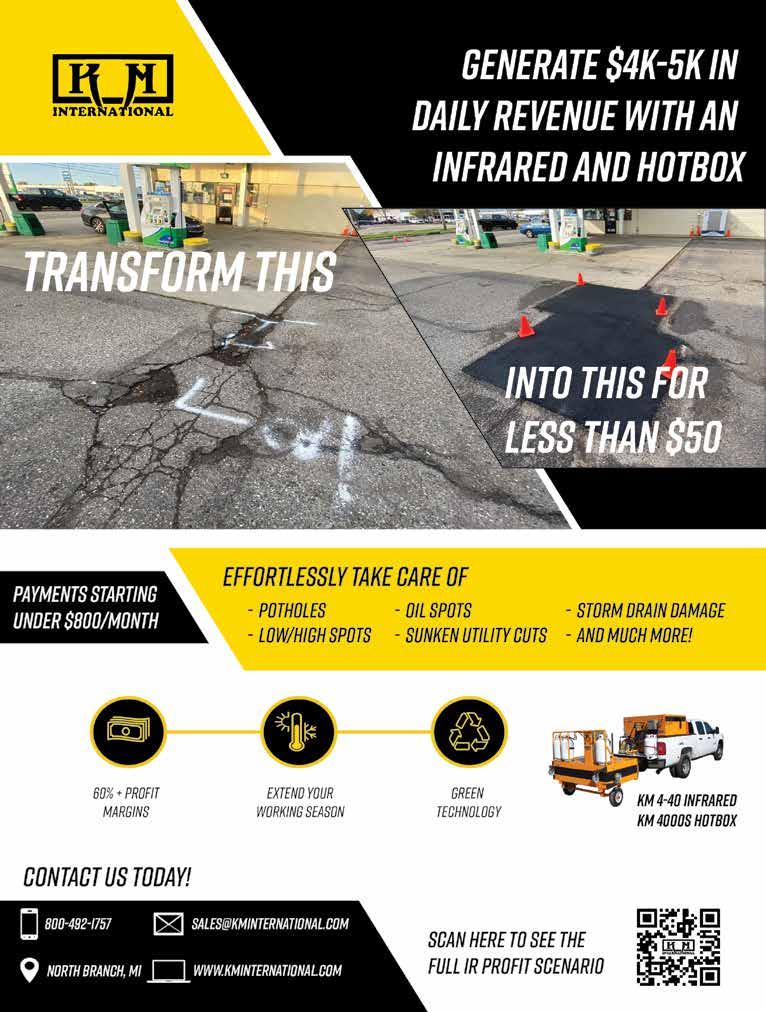
Reverse the Effects of Asphalt Aging After Dark
By Michelle Garrett
ne of the challenges of maintaining roadways is that much of the work is better completed during the night when they’re less heavily traveled. However, when work must be done at night, it can impact how long the project takes. For example, when pavement surface rejuvenators are applied during the day, especially when the sun is shining, they cure much faster, allowing the road to reopen sooner. Applying them at night has historically meant longer drying times, as the cooler nighttime temperatures can make it more difficult to maintain the asphalt at the optimal temperature.
Up to now, there’s been limited ability to apply rejuvenators at night with no negative impact on skid resistance.
Apply Rejuvenator at Night
In 2021, Brian Fennell, founder of iEmulsions, and his business partner, chemist Martin Thompson, began to review data and conduct research to develop a product to serve the unmet needs of the U.S. Department of Transportation’s initiative to extend the service life of open-graded friction course (OGFC) asphalt pavement designs.
The iEmulsions team examined data from the 2018-2021 National Center for Asphalt Technology (NCAT) Test Track research cycle. As they were reviewing the data and talking with DOT representatives, one of the needs they heard most frequently was that on heavily traveled roadways, any pavement rejuvenator product needed to be applied at night. Another commonly stated need was for a treatment that didn’t negatively impact friction characteristics.
As part of the 2018 Test Track research cycle, the Mississippi Department of Transportation sponsored a spray-on rejuvenator experiment. The study’s objective was to evaluate the field performance of spray-on rejuvenator products compared to a controlled section of pavement. Both short- and long-term effectiveness in rejuvenating asphalt surfaces were assessed, as well as the effects on surface friction after application.
During the NCAT testing cycle, a distributor dispensed the rejuvenator product, which took some time to dry. The lack of skid resistance in the initial hours had the potential to cause accidents.
iEmulsions selected the three products that performed the best and benchmarked them, with improving skid resistance as a goal.
Recognizing the Collaborative Aggregates technology as the top performer of the three products, iEmulsions chose to use Delta Mist as the base for its new formulation, Delta Mist HR. Armed with Delta Mist HR, their next task was to address the issue of improving skid resistance at night in the shortest amount of time possible. Their solution was a proprietary, two-bar application system, Smart Spray Technology (SST).
The first spray bar applies Delta Mist HR, followed by an application of an SBR polymer from the second spray bar. The SBR polymer coating is used to improve skid resistance while the Delta technology is absorbed into the asphalt binder.
After iEmulsions developed its new Delta Mist HR formulation, it partnered with the testing lab at NCAT to benchmark its perfor-
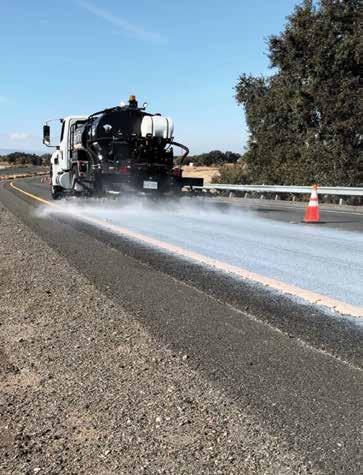
mance in a field setting. Three separate treatments were applied on sections of US 280 in Alabama, which are detailed in the sidebar.
Test results from the NCAT lab showed a decrease in the complex shear modulus (|G*|) for all three applications, indicating improved resistance to fatigue cracking in the asphalt with the application of Delta Mist HR. Test results also showed all three Delta Mist HR samples demonstrated improved crack resistance, or an increase in phase angle (δ) of asphalt binder when compared to the control sample.
To assess how iEmulsions’ patented application process affected the skid resistance within the first few hours after application, the NCAT team used a Dynamic Friction Tester (DFT). Results from all three samples indicate that road traffic could be resumed within two hours after application. (See the graphs in the sidebar for details.)
In-Field Research Conclusions
The iEmulsions team conducted trials to prove their technology would be effective and would work in a shorter timeframe. To
Here you can see the Delta Mist HR and SBR polymer coating don’t obscure the pavement markings when rejuvenating the pavement. All photos courtesy of Collaborative Aggregates
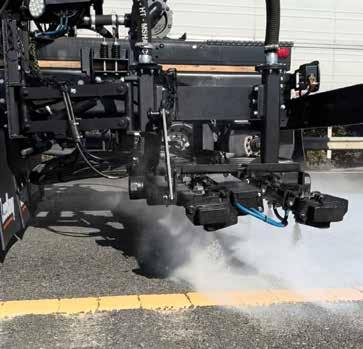
Three Test Sections
Control: Untreated 7-year-old Open Graded Friction Course (OFGC) pavement.
Sample #1: 0.027 gal/yd2 Delta Mist HR + 0.013 gal/yd2 SBR Polymer.
Sample #2: Pre-wet surface with 0.010 gal/yd2 water then applied 0.027 gal/yd2 Delta Mist HR + 0.013 gal/yd2 SBR Polymer.
Sample #3: Pre-wet surface with 0.010 gal/yd2 water followed by 0.027 gal/yd2 Delta Mist HR + 0.013 gal/yd2 SBR Polymer, 2 seconds of compressed air to simulate a drying effect, then a second treatment of 0.013 gal/ yd2 SBR Polymer was applied.
date, notable field trials where iEmulsions has showcased Delta Mist HR include:
• In 2023, research was done applying Delta Mist HR to three sections of an Alabama highway, working through the Alabama Department of Transportation and NCAT. The data showed that Delta Mist HR provided neutral skid resistance numbers two hours after application using the two-bar system.
• While a test unit of an application truck was built by LeeBoy, a manufacturer of asphalt paving equipment, further testing to measure skid resistance was done through the Virginia Department of Transportation on four sections of highway.
• In the fall of 2024, the first trials of Delta Mist HR applied with the new truck were conducted in Mesa, Arizona.
• More trials took place in Sacramento, California, on Interstate 5. In both trials, neutral skid numbers were achieved within a twohour timeframe.
Even with high humidity and dewpoints, this research showed that the application rate of the polymer can be increased to accelerate the drying time. The work proved faster, regardless of its completion during the day or night, with nighttime applications showed no negative impact on skid resistance.
“When transportation agencies hear that we can apply the rejuvenator at night with no negative impact to skid resistance, they’re interested,” Fennell said. “Departments of Transportation have never allowed anything like this to be applied on a heavily trafficked highway. Now, they can. The technology iEmulsions is offering is a game changer.”
The rejuvenator can be applied over striping without removing reflectors, and no restriping or sanding is needed. In one short closure, the iEmulsions solution rejuvenates the pavement, preserving it and bringing it back to life. This technology is designed to create longer-lasting, more sustainable highways.
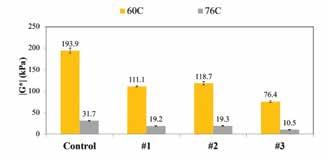
Complex Shear Modulus (|G*|) at 60oC and 76oC 10 rads/s, FAA P-632 parameter. All graphs courtesy of Collaborative Aggregates
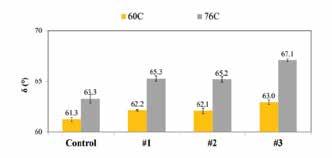
Phase Angle (δ) at 60oC and 76oC FAA P-632 parameter
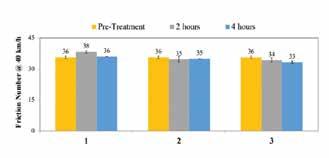
Dynamic Friction Tester (DFT)
Here you can see the proprietary, two-bar application system, Smart Spray Technology (SST). The first spray bar applies Delta Mist HR, followed by an application of an SBR polymer from the second spray bar.
Production Updates Going into the Fall
FROM ASPHALTPRO STAFF
From sizing the aggregate to adding the liquid asphalt cement (AC), asphalt producers are looking for the best products and services on the market to make their jobs easier, faster and greener. This month’s production-related product gallery takes a different, more robust approach to presenting some of the products, services and ideas available as we head into the end-of-season rush.
Starting with TEC Container Solutions, headquartered in West Sussex, United Kingdom, we have an article about the use of specialized tanks for multiple projects. This month, we also look at the crushing and screening marketplace, as shared by Persistence Market Research, before diving into a handful of new items that could affect your bottom line.
STORAGE FOR SPECIALTY BITUMEN OPERATIONS
TEC Container Solutions is highlighting the growing role of flexible, modular and fit-for-purpose storage solutions in supporting the evolving demands of the speciality bitumen market. From polymer modified bitumen (PMB) to crumb rubber and bond coat emulsions, the industry is increasingly recognising the need for equipment tailored to each product’s unique handling requirements.
In recent deployments across the United Kingdom and Australia, TEC’s MEST Bitutainer™ has demonstrated how a dedicated, modular tank solution can provide both flexibility and control.
While advancements in product formulation continue to accelerate, driven by performance demands, environmental targets and temperature resilience, the same cannot always be said for storage infrastructure.
Frequently operators adapt existing tanks for new and more sensitive products, leading to poor temperature retention, product degradation or inefficient site setups. Similarly, standard bitumen pumps operating at high RPMs can cause emulsions to shear or separate, particularly in systems that require recirculation.
“Across the industry, we’ve seen high-spec pumps deployed for specialist products, but
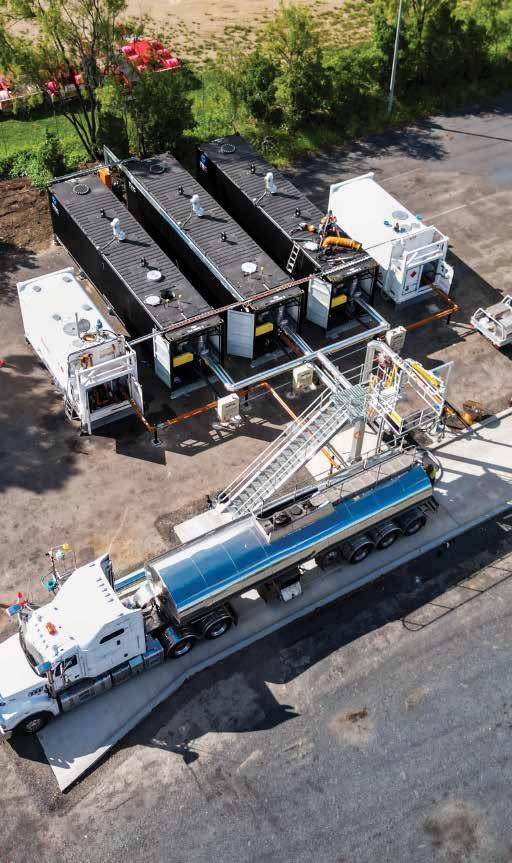
This MEST facility handles crumb rubber product.
RAISING THE STANDARD
Since its introduction, the Weiler P385 has set the standard for commercial pavers. The P385C raises that standard.
Increase to 120 hp with the Cat® C3.6 Tier 4F/Stage V engine.
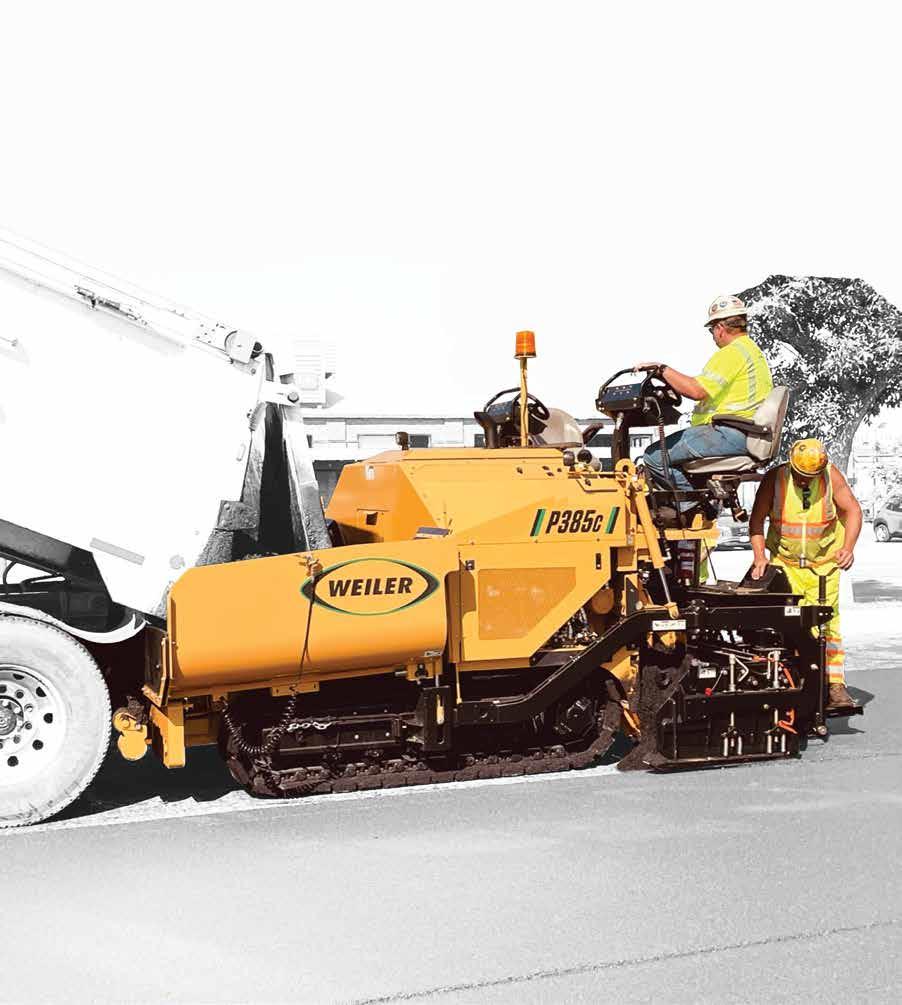
Variable speed and reversible conveyors and augers and a 25% increase in tunnel height provide optimal material output.
Modular conveyor drive and sealed chain case increase feeder system reliability and life.
Enhanced heat system performance with direct-drive hydraulic generator and elimination of GFCI breakers.
HYDROLENE ™
ASPHALT MODIFIERS

Broad range of viscosities
Range of chemistry
Consistent quality
Low temperature enhancement
Polymer-modified performance
High temperature stability
Roofing flexibility and tack
Cold-in-place recycling
Improved hot-mix asphalt

PRODUCT GALLERY
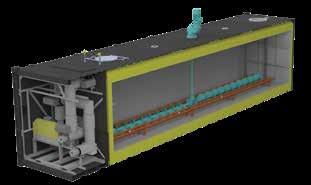
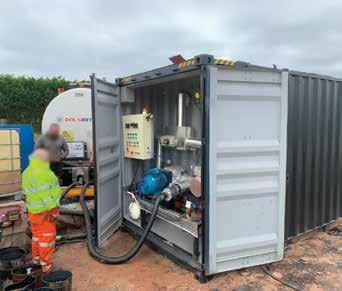
tanks are often still an afterthought,” said TEC’s Jon Whittall. “As products become more advanced, so must the equipment used to store and deliver them.”
ADDRESSING PRACTICAL CHALLENGES ON-SITE
In one recent project, TEC supplied a MEST Bitutainer to support on-site distribution of bond coat emulsion. The product required gentle heating and daily recirculation to maintain quality. The MEST’s automated heating system and programmable recirculation cycle eliminated the need for manual intervention to ensure product quality, while the fully self-bunded tank removed the need for additional containment infrastructure.
In another deployment, a contractor required reliable storage of crumb rubber-modified bitumen, which has unique agitation and temperature stability requirements. The MEST Bitutainer was configured to meet these specific handling requirements, providing a compact, customized and relocatable solution for regional asphalt projects.
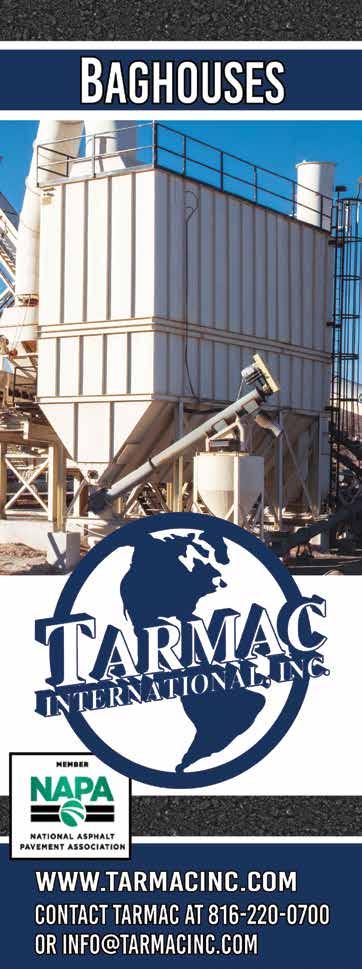
This image shows the discharging operation of the MEST Bitutainer from TEC Container Solutions.
The auger modification in this container is designed to handle crumb rubber agitation.
PRODUCT GALLERY
Apply Now for the Paving Scholarship!Women of Asphalt
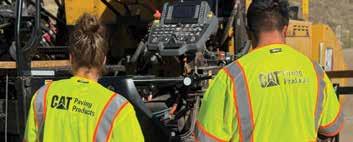
What’s Included
Full tuition to Caterpillar’s week-long paving training in December, plus travel, hotel, and food.
Who Should Apply
WofA members in the asphalt industry — from field crew to engineers and students. Apply at (scan QR code below)

FIT FOR PURPOSE, BUILT FOR PERFORMANCE
The MEST Bitutainer is a self-contained, turn-key storage unit, featuring a sealed equipment compartment that can be tailored to each product’s operational profile. From high efficiency electric heating and automated agitation to custom transfer pipework configurations and safety interlocks, the system is designed to simplify on-site logistics while protecting the quality of high-performance materials.
Because the tank is double-walled, fully insulated and self-bunded, it removes the need for civil works or bund construction. It has a standard 40-foot footprint.
As the use of niche and modified bitumen continues to grow, alongside the pressure to reduce waste, improve operational efficiency and meet environmental standards, TEC is committed to providing infrastructure solutions that evolve with the market. From packaging-free storage alternatives for PMBs to precision handling of delicate emulsions, the MEST Bitutainer is enabling contractors to move away from reactive adaptations and toward purpose-built systems that prioritize efficiency, safety and performance.
For more information, visit TEC Container Solutions’ website.
MOBILE CRUSHERS AND SCREENERS MARKET
Ganesh Dukare, of Persistence Research & Consultancy Services Limited, headquartered in the United Kingdom, shared that the global mobile crushers and screeners market is set for substantial growth, with projections indicating an increase from USD 3,299.5 million in 2025 to USD 5,509.8 million by 2032, representing a compound annual growth rate (CAGR) of 7.6% over the forecast period. The growing need for improved efficiency and reduced operational costs has positioned mobile crushers and screeners as vital assets in modern construction and mining operations.
THE RISE OF MOBILE CRUSHERS AND SCREENERS
The construction and mining industries are at the heart of urbanization and economic development, particularly in developing countries. Mobile crushers and screeners offer enhanced mobility, flexibility and reduced setup time compared to traditional stationary equipment. These mobile units are capable of processing materials on-site, eliminating the need for transportation to distant processing plants. This results in cost savings and improved turnaround times.
The growing trend of adopting mobile solutions can be attributed to the industry’s focus on efficiency, sustainability and reduced environmental impact. Unlike conventional methods, mobile crushers and screeners help reduce waste by processing materials directly at the source, which also minimizes transportation costs and emissions. Studied by Persistence Market Research, these machines are designed for multi-functional use.
PRODUCT GALLERY
KEY MARKET DRIVERS
Several factors have contributed to the expanding role of mobile crushers and screeners in construction and mining. First and foremost is the demand for cost-effective, high-performance equipment that can operate in challenging and dynamic environments.
Mobile crushers and screeners allow for rapid setup, and their ability to move easily across project sites has made them a preferred choice for contractors. With the growing emphasis on efficiency and performance, these machines are designed to handle the crushing and screening of large volumes of material, resulting in improved productivity.
The increasing need for infrastructure development in emerging economies has created a fertile environment for mobile crushers and screeners. Many countries are investing heavily in road construction, railway development and urban housing projects, all of which require large quantities of crushed material. These equipment solutions are not only beneficial in terms of productivity but also help address logistical challenges associated with transporting raw materials to distant processing plants. Their ability to work in remote areas without the need for extensive infrastructure also contributes to a lower environmental footprint.
TECHNOLOGICAL ADVANCEMENTS AND INNOVATION
Innovation continues to drive the mobile crushers and screeners market, as well. Automation and digitalization are becoming increasingly prominent in the industry, with many mobile crushers now equipped with smart features such as remote monitoring, predictive maintenance and fleet management systems. These technologies help operators monitor equipment performance, reduce downtime and enhance safety.
Mobile crushers and screeners are also benefiting from improvements in energy efficiency. Manufacturers are developing machines that require less fuel while providing higher output, thereby helping businesses reduce operational costs. The use of hybrid and electric-powered mobile crushers is gaining traction.
In terms of product development, manufacturers are continuously improving the mobility, capacity, and versatility of mobile crushers and screeners. Newer models are designed to be more compact and efficient, providing higher throughput while maintaining ease of use. Many integrate advanced screening technologies.
REGIONAL INSIGHTS
The mobile crushers and screeners market is witnessing growth across various regions, driven by infrastructure development projects and mining activities. North America and Europe are prominent markets due to the ongoing demand for high-efficiency equipment in construction and mining operations. These regions are expected to continue driving market growth due to their well-established infrastructure and robust industrial activities.
In contrast, the Asia-Pacific region is expected to witness the highest growth rate during the forecast period. The region’s booming construction sector, along with rising investments in infrastructure development, is fueling demand for mobile crushers and screeners. Additionally, countries like China and India are rapidly industrializing, creating significant opportunities for market expansion.
We’ve been designing and manufacturing custom mixing solutions in Tennessee for nearly 40

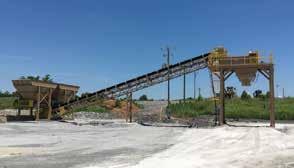
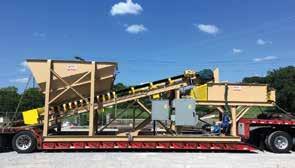
Coldmix • Fly Ash • Salt Treatment
CHALLENGES AND OPPORTUNITIES
Despite the positive outlook, the mobile crushers and screeners market faces challenges. The high initial cost of these machines may deter small and medium-sized enterprises (SMEs) from adopting them. However, with the growing trend of leasing and rental models, businesses can access the latest equipment without significant upfront investment.
Moreover, the lack of skilled operators and maintenance personnel in certain regions can impede the effective use of mobile crushers and screeners. To mitigate this, manufacturers are increasingly offering training and support services to help businesses maximize the potential of their equipment. There is also an opportunity for the market to expand further through innovation in automation and remote monitoring, which could make these machines even more user-friendly.
The mobile crushers and screeners market is evolving rapidly, driven by innovation, technological advancements, and the growing need for efficient and cost-effective solutions in the construction and mining sectors. As the industry continues to embrace sustainability and automation, these machines will play an even more significant role in reshaping the way materials are processed.
Ganesh Dukare is the SEO Executive of Persistence Research & Consultancy Services Limited, UK.
BERGKAMP
In June, Bergkamp, Salina, Kansas, announced the launch of the Journeyman Mobile Mix Plant, which is the company’s first entry into the cold central plant recycling (CCPR) market. This move marks an expansion of Bergkamp’s innovation into cold recycling technologies, building on decades of expertise in slurry and microsurfacing solutions.
Scott Bergkamp, president of Bergkamp, said, the unit is “built to make CCPR more intuitive, more consistent and more reliable from day one.”
To achieve that goal, Bergkamp began its development process in 2017, building and testing an early prototype to validate performance and operator experience. Rather than retrofitting existing equipment, the team refined the concept, drawing on the success of its EMCADS control technology and input from contractors and operators.
The result is a machine that integrates proprietary automation and metering controls to reduce calibration time. It brings flexibility and precision to the jobsite, capable of producing mixes with 100% RAP, 100% virgin aggregates or a blend in between, according to the manufacturer. Aggregate and/or RAP is fed into a 10-cubic-yard-capacity hopper at one end of the unit. A conveyor sends this material into a pugmill. A 208-horsepower engine powers hydraulic pumps, and hydraulic motors power all the



functions. The pugmill discharges the material into a stockpile for pickup by a loader or delivery into a haul truck positioned beneath the unit.
Bergkamp explained the entire mobile plant can be hauled to a site behind a semi-tractor without the need for wide-load permits or other delays. The contractor can take the unit directly to an agency’s stockpile or their own, set it up and get to work.
“You can set this up in an hour or less at the stockpile site and start working,” Bergkamp said.
The rated maximum capacity is 275 tons per hour, depending on mix ratio variables, and Bergkamp has seen that rate as the sweet spot. This plant is serving the needs of contractors who need to repair or reconstruct roads in remote locations; Bergkamp states that it can be taken to places that don’t have another alternative and set up to provide mix performance as good as that in high-production facility locations.
“We see so much potential for CCPR,” Bergkamp said. “Now contractors can take a plant without any permits, without any wide-load signs because it’s as easy to move as any other semi-trailer, and perform in remote areas.
“At Bergkamp, we take pride in building equipment that just feels right to use—day after day,” added Bergkamp. “Journeyman reflects that philosophy. It’s the product of listening to customers, designing with the operator in mind, and refusing to compromise on quality.”
The company plans to have a unit on display at CONEXPO-CON/AGG 2026 but it is available for the North American market now.
For more information, visit the Bergkamp website.
FINLAY
Finlay®, a Terex Brand, has introduced the J-1280 Jaw Crusher, a new addition to its tracked mobile crusher lineup. Designed to bridge the gap between the J-1175 and the larger J-1480, the J-1280 delivers its performance in a more transport-friendly package, making it a solution for medium-sized quarries and larger contractors seeking high capacity without the logistical challenges of heavier equipment.
Featuring a large 1200mm x 820mm jaw chamber, the J-1280 offers a wide gape and robust throughput capabilities for hard rock applications. Despite its size, the machine is engineered for easier transport, weighing less than the J-1480.
One of the standout features of the J-1280 is its hydrostatic drive system. The hydrostatic setup allows the crusher to continuously operate in reverse. This functionality is critical for clearing blockages without the need to manually lift material from the chamber. The ability to unblock not only improves safety by reducing the need for working at height but also minimises downtime by eliminating the need for lockout/tagout procedures during unblocking.

Fossil-fuel burners — whether burning natural gas, propane, diesel, or fuel oil — all run the risk of damaging your valuable asphalt and emulsion products.
Our unique Lo-Density® drywell-style electric heaters dissipate controlled heat as low as three watts per square inch on the heater’s sheath to prevent coking or damaging of temperature-sensitive asphalt, oil, and emulsion materials. Find out more:
The J-1280 is available in three feed-in configurations: a standard vibrating grizzly feeder (VGF), a pre-screen option, and an extended pan feeder with pre-screen.
For more information, contact your local Finlay distributor.
JOHN DEERE
The updated P-Tier Wheel Loaders from John Deere, Moline, Illinois, feature an integrated suite of smart systems designed to simplify maintenance and aid in getting machines “ready to run.” Advanced on-board diagnostics include daily fluid checks, fluid loss detection, and battery health monitoring, which are all accessible through the in-cab display.
Let’s look first at the John Deere exclusive QuadCool™ Cooling System available in the updated P-Tier Wheel Loaders. Redesigned rear hoods, grilles and cab roofs eliminate the need to climb on the machine for maintenance, while side-access planes simplify cleaning of the condenser and radiator. The newly relocated axle cooling system is now easier to access and maintain, and a reverse fan clears debris out through the side doors, designed to minimize buildup beneath the machine. In addition, the rear door opens independently from the sides, making daily maintenance more convenient.
Inside the cab, operators will now have a new, next generation primary display, a 7-inch primary touchscreen that offers a larger interface and intuitive navigation that helps to enhance operator fo-

PRODUCT GALLERY
cus and simplify operation. This display enables a new in-base rear camera view and supports the ability to run two applications simultaneously, including the backup camera. Also, physical buttons have been removed from the display face to improve user experience, while key machine functions remain easily accessible. An optional G5 secondary display is available.
The P-Tier models can now be equipped with SmartDetect™ from the factory. To support greater material handling efficiency, the P-Tier Wheel Loaders are now available with new high-strength steel buckets featuring extended lips. These are updates to the next generation 524, 544 and 624 P-Tier Wheel Loader models.
For more information, visit your local John Deere dealer.
LIPPMANN
Lippmann, Cudahy, Wisconsin, announced in July, PacWest Machinery is its newest authorized dealer, expanding Lippmann’s presence and service capabilities in the Pacific Northwest. PacWest will provide sales, rentals, and aftermarket support for Lippmann’s full line of crushing and screening equipment, bringing a wealth of experience and resources to aggregate producers in the region. With six full-service branches located in Seattle, Spokane, Mount Vernon, and Pasco, Washington; and Portland and Eugene, Oregon, PacWest Machinery offers comprehensive coverage throughout the Pacific Northwest.
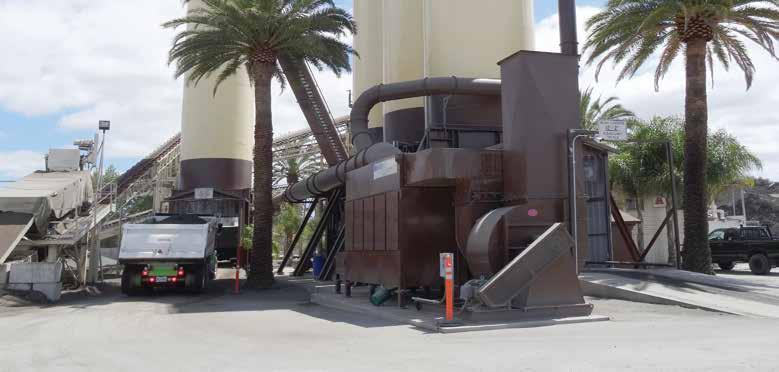


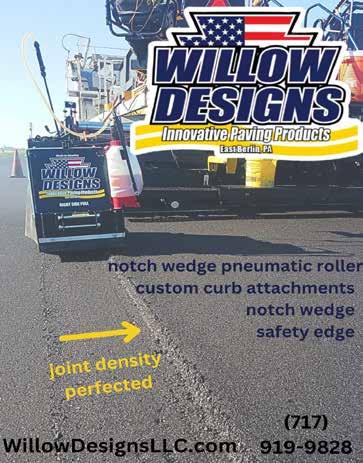





















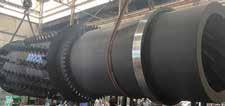









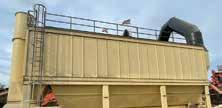
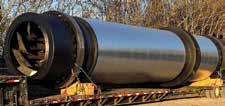


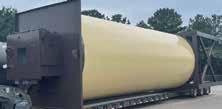



FROM VOLVO CE
AVolvo CE Electric Design Wins Red Dot Award
global team of Volvo engineers and designers picked up a Red Dot Product Design award for the L120 Electric at an awards ceremony July 8. The sleek shape of the battery-electric machine offers a contrast to the industry’s “boxy” diesel wheel loaders. The design supports improved visibility, safety and sustainability and is the first of its kind within Volvo’s broad portfolio of electric solutions.
The quality and design of the L120 Electric wheel loader won over an international judging panel to scoop a coveted Red Dot Product Design award at the annual ceremony in Essen, Germany in July. The Red Dot is one of the world’s largest design competitions and it recognizes outstanding achievements in product and industrial design.
The machine’s modern look was the result of a year of bold thinking by technology and design teams from Jinan in China, and Eskilstuna and Gothenburg in Sweden. This award achievement is therefore a testament to the power of global collaboration.
NEW LOOK ENHANCES VISIBILITY
Peter Reuterberg, Senior Chief Advanced Designer for Volvo CE, said: “I’m happy we won this award but I’m especially happy that we won it for this machine. The change from diesel to electric gave us the opportunity to think differently and strive for big impact. Our hope is that this new silhouette will be instantly recognizable as electric.”
The streamlined frame of the electric loader is made possible because of the removal of a combustion engine. The result is a transformation from a boxy rear end into a sleeker shape for the new era of electric.
If designers replaced the combustion engine with larger-in-size batteries, this would have not only created a “bulkier” shape but would have also reduced visibility from the cab. As wheel loaders are designed to be driven both forwards and backwards

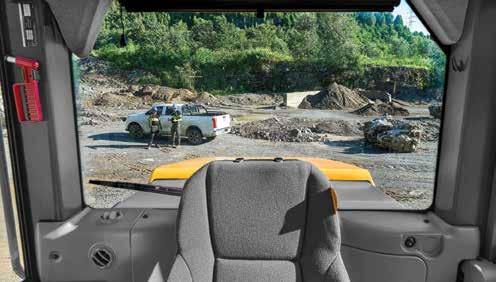
in equal measure, all-round visibility is crucial to their safe and efficient operation. Instead, engineers and designers worked together on a solution to integrate the batteries into the counterweight of the machine. The heavy weight of a battery is often seen as a problem in electric machine design, but in this case, the battery is being used to replace a concrete counterweight required for wheel loaders.
The result is a machine that provides enhanced visibility, safety and sustainability. Annie Gao, Product Platform Engineer at the Jinan Technology Center, Volvo CE China, said, “When we debuted the machine it marked a significant breakthrough, truly capturing the spirit of an electric vehicle. It is our relentless pursuit of innovation, close attention to detail, and commitment to quality that made this possible.”
The new look L120 Electric captured the attention of Red Dot’s panel of judges.
The new shape ensures excellent all-round visibility for the operator.
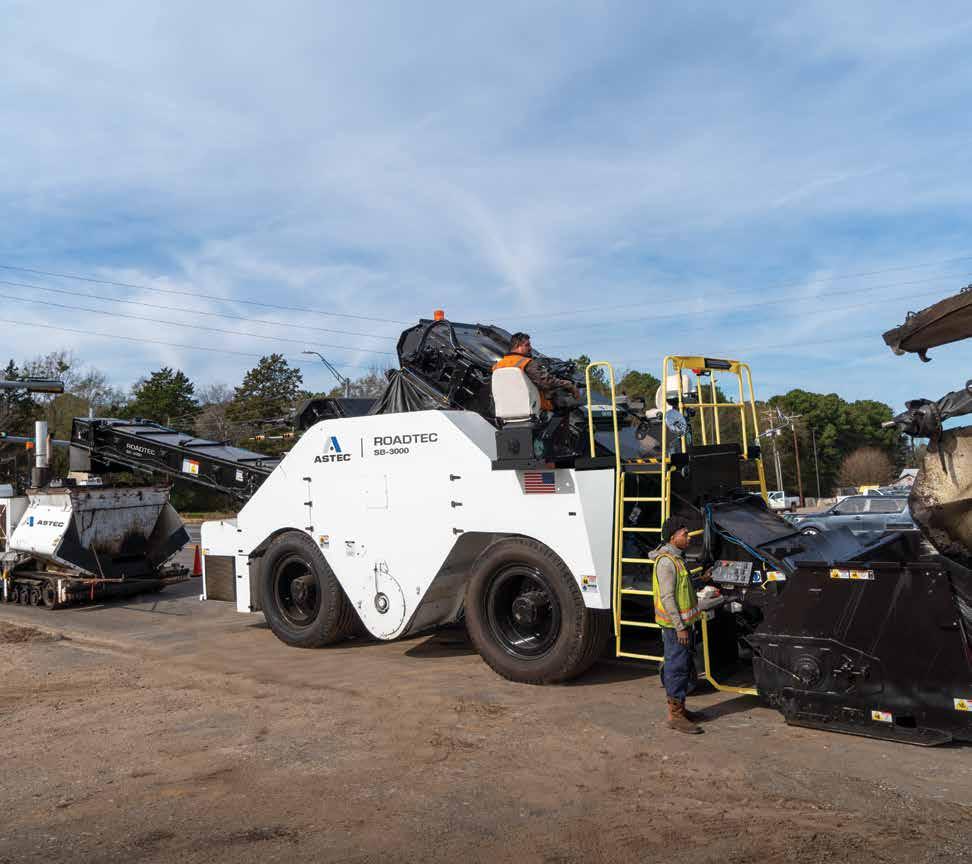
Roadtec Shuttle Buggy ® SB-3000
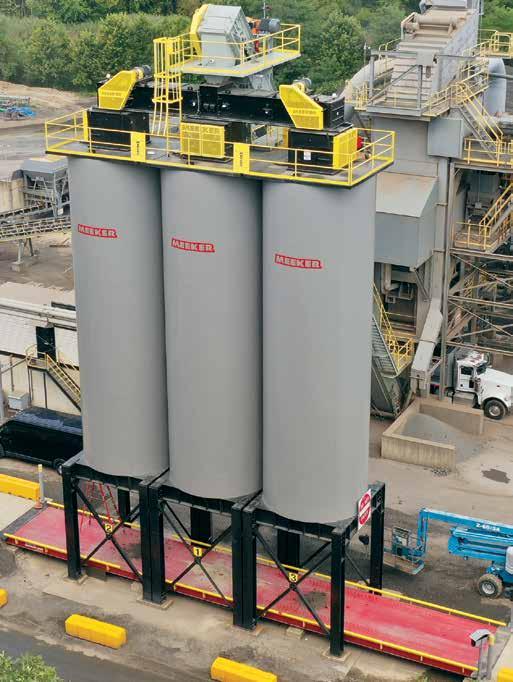
Astec revolutionized the paving industry with the introduction of the Shuttle Buggy, and now the SB-3000 sets a new standard in material transfer vehicles. Effortless maintenance, unmatched performance, and four steering modes for ultimate agility keep paving seamless. Experience groundbreaking innovation with the patented Ground Crew Control Station for the ultimate user experience and protection. The SB-3000 isn’t a machine, it’s a revolution in material transfer, built on Astec’s legacy of industry firsts.
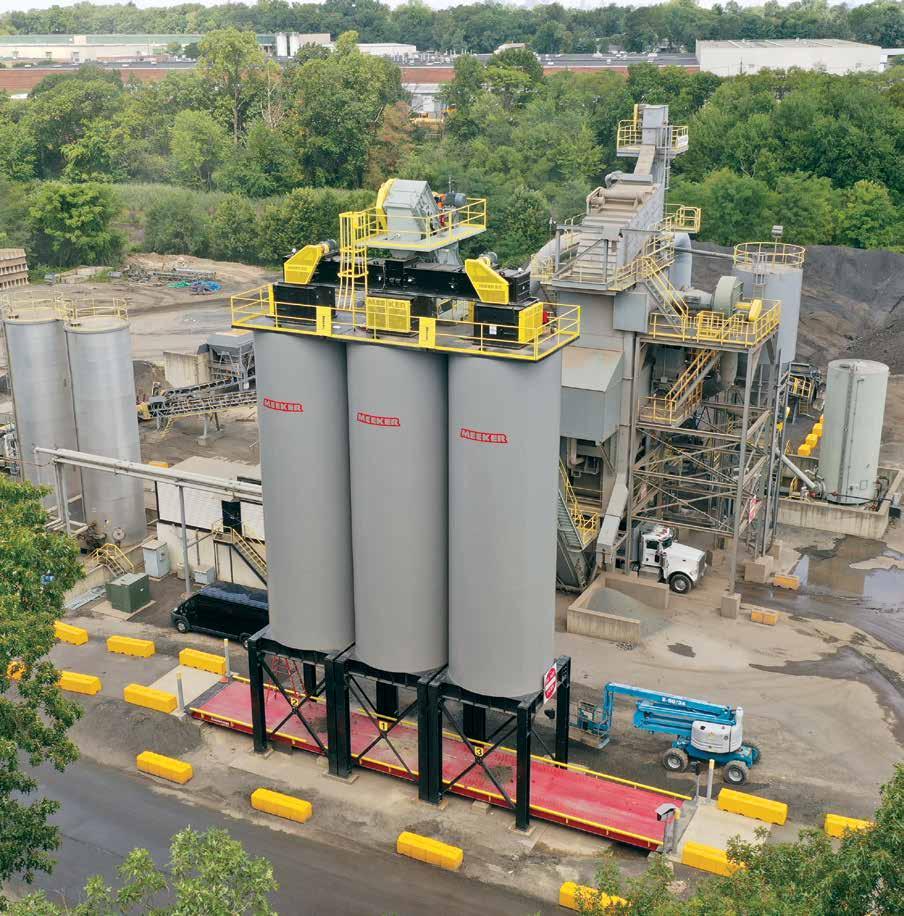






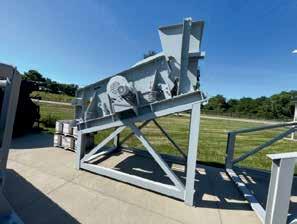
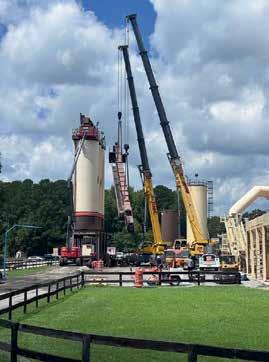



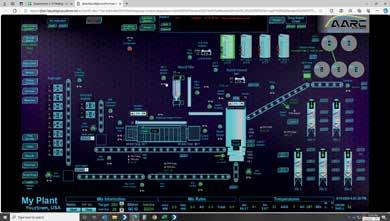


RETROFIT
DIRECT
ALTERNATIVE FUELS
MINIMAL MODIFICATIONS REQUIREDTO
CHANGE FUEL SOURCE
ENERGY
ECO FRIENDLY
